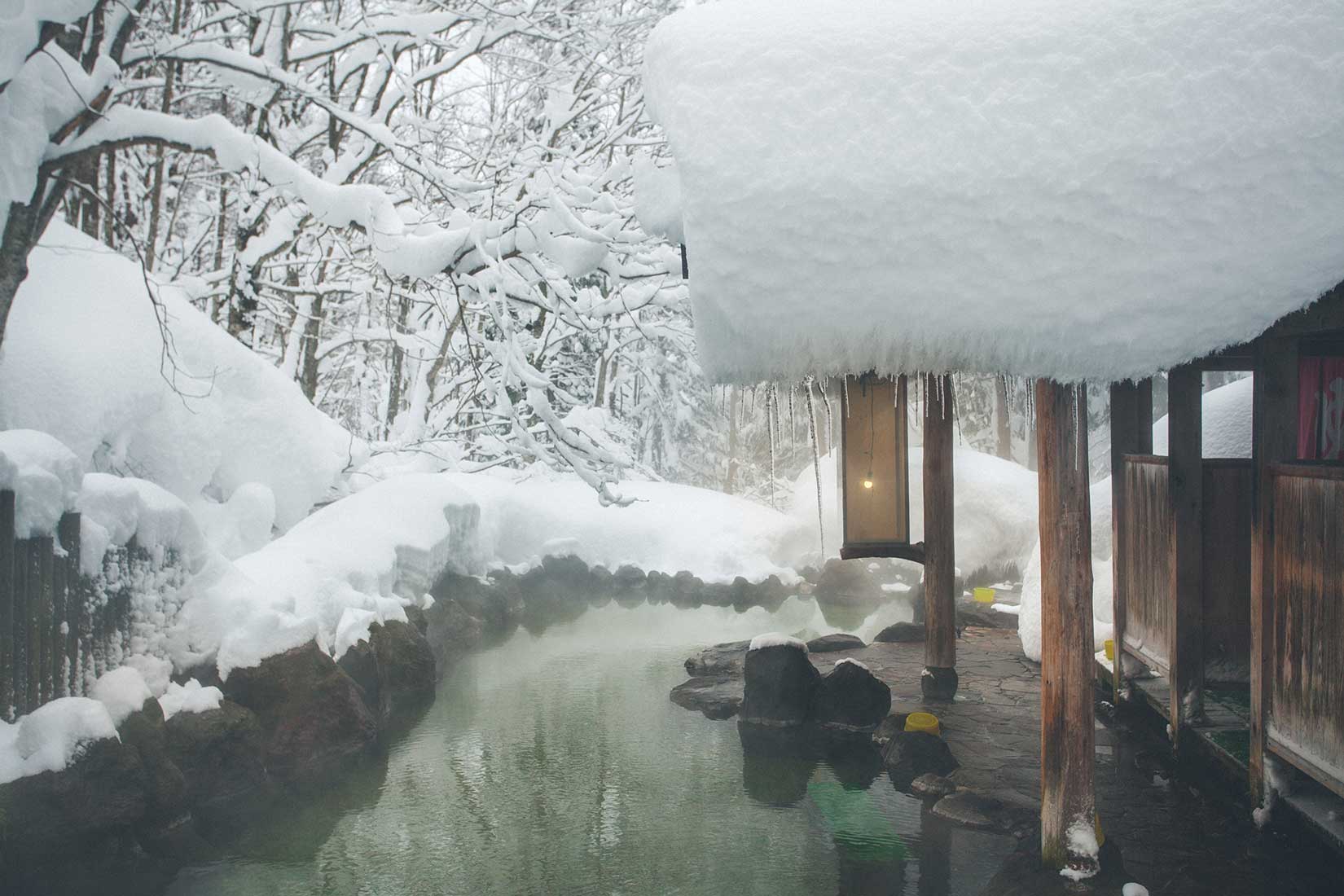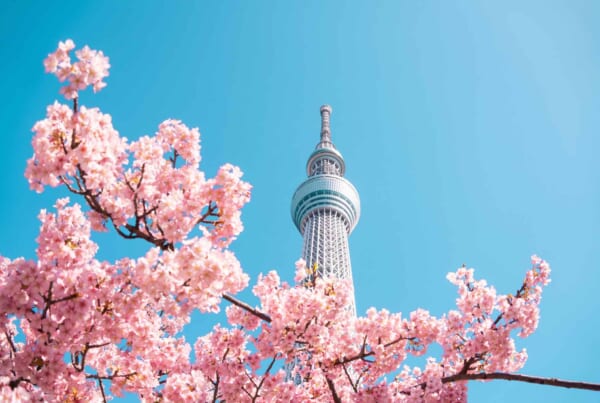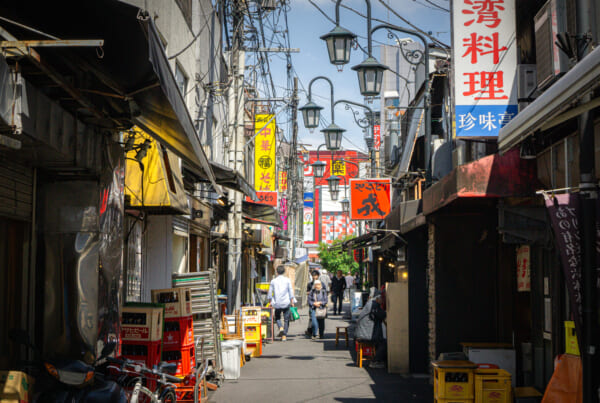Having been born on the winter solstice, I have always felt at home during the short and cold days of the winter. Even in the summer, my love for winter often took me beyond beach hot spots to destinations like Svalbard, the world’s most northernmost permanent settlement where summer temperatures rarely exceed 5°C. Or Alaska, where wearing a good coat in July is not optional — it’s a necessity. I often take my long vacations during the winter months in search of beautiful snow sceneries all around the world. Even so, I was still not ready for the phenomenal winter beauty of Semboku City (仙北市) in Akita Prefecture, which truly blew me away. If I am to open my heart to you, dear reader, it is to convey its beauty that brought tears of joy in quiet moments during my journey through this winter wonderland.
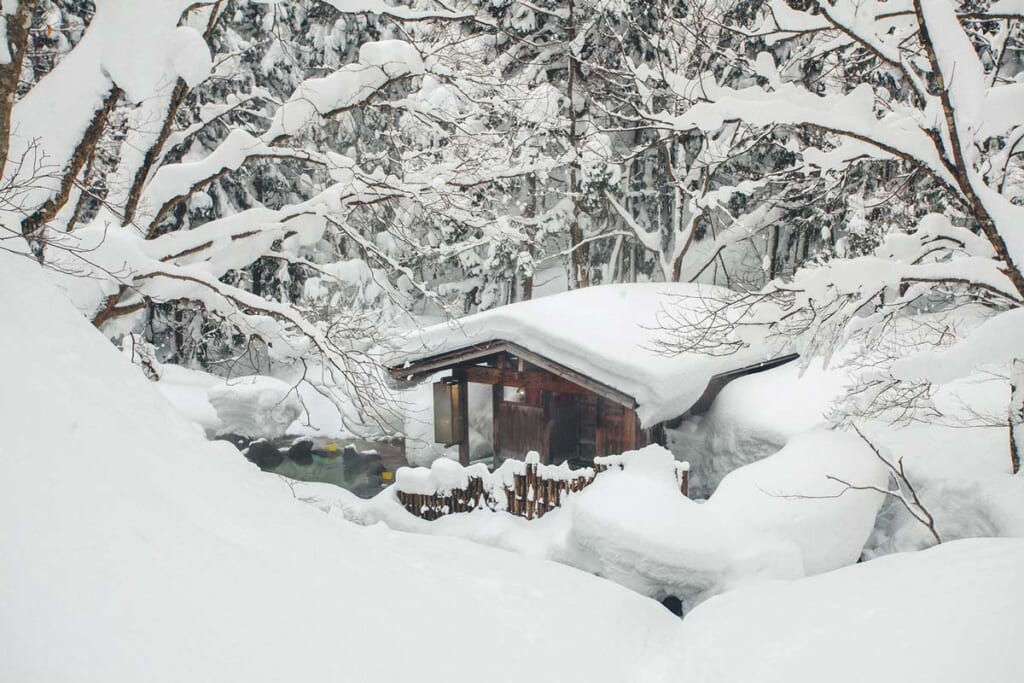
This is the journal of three beautiful winter days spent in Semboku in Akita — one of the six prefectures of the Tohoku region. Semboku has many inviting traits, which include dense forests and walking trails, Tazawako, Japan’s deepest lake, historic samurai towns, world-class snow resorts, and possibly the best snowy onsen experience in Japan. On the whole, Semboku is the winter dreamland that we have all been promised in the wintery childhood tales; one of cozy, snow-covered lands where one can peacefully enjoy the perfect winter scenery in the comfort of our cabins, or even better, onsen baths.
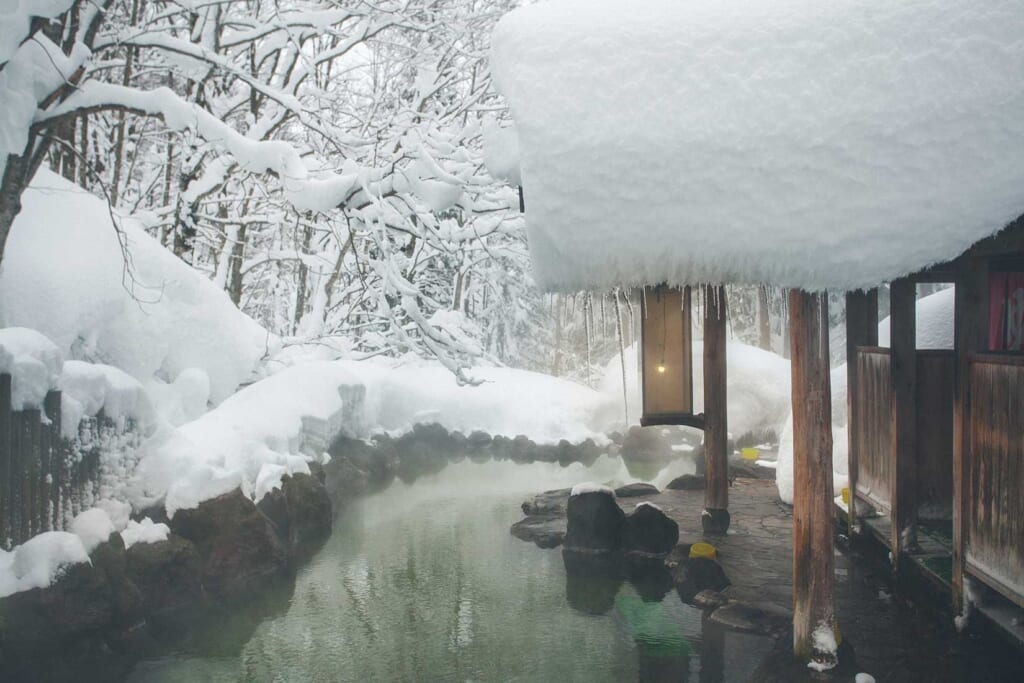
My journey in Semboku started in Kakunodate — one of the stops along Akita Shinkansen Line — which is easily accessible from Tokyo with direct service in 3 hours and ending in Tazawako.
Kakunodate: A Well-Preserved Samurai Town in Akita
Kakunodate (角館) is one of Japan’s samurai towns that has remained relatively unchanged since its establishment in 1620 during the Edo period (1603-1867) and still retains the atmosphere of the feudal era. Today, there is an effortless harmony between traditional architecture and daily life where ancient buildings still serve as the living and working grounds for the locals.
The historical aura of Kakunodate is so genuine that one expects to encounter eloquent town ladies strolling at every corner or rushing to the tea ceremony in their kimonos. While the days of the Edo Period may long be gone, exploring the old quarters of Kakunodate dressed in kimono is still a very popular activity for the visitors.
Where to Rent a Kimono in Kakunodate
Kimono Tabi Shanari located on the old merchant street offers kimono rentals that visitors can book online. The rental kimono comes with a dressing service, where a kimono sensei dresses you from head to toe, including accessories such as hairpins and tabi socks. The behind-the-scenes look at kimono dressing and the effort that it takes made me develop a whole new level of appreciation for the “craft” of kimono wearing.
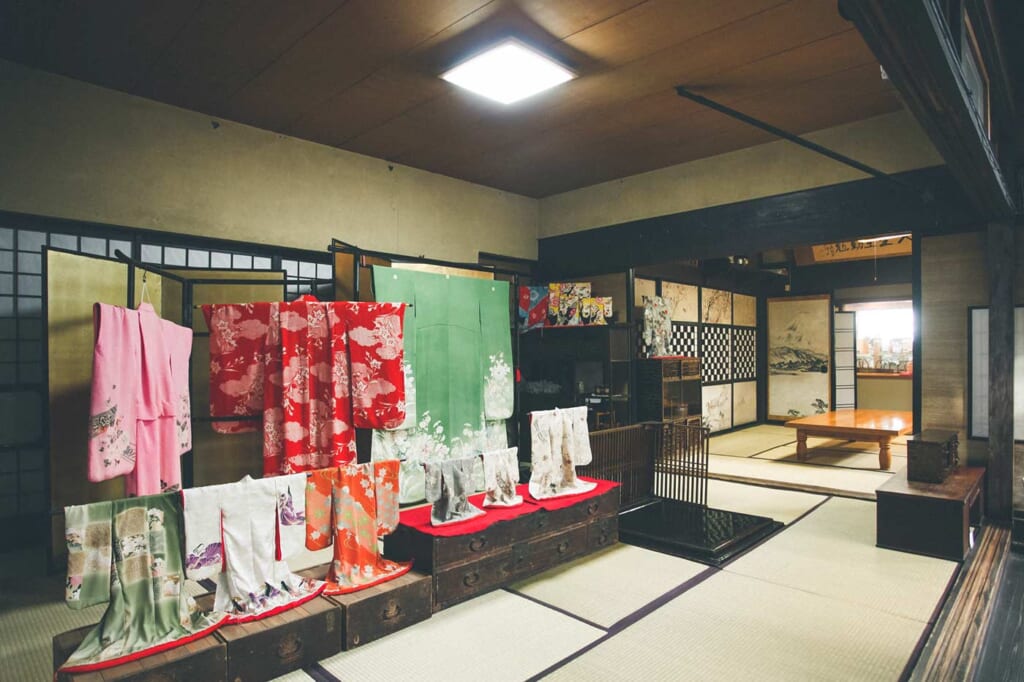
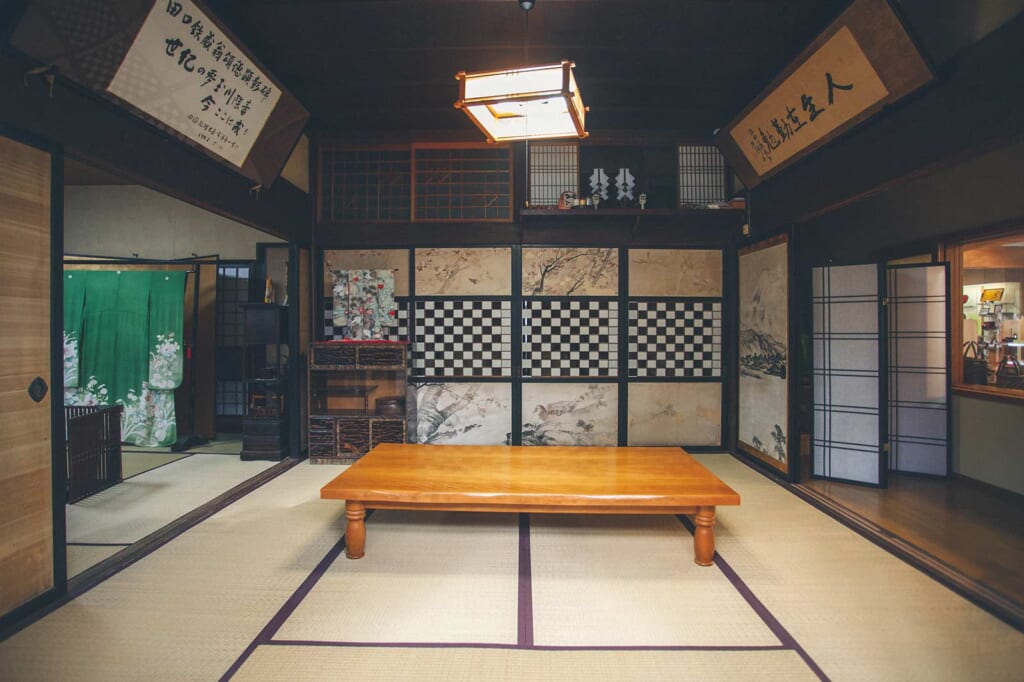
One of the best ways to get the best out of your kimono experience is to head to the samurai district and pretend that you live in the Edo era. Six of the many samurai houses lining Bukeyashiki Street open their doors to the visitors.
Visit the Oldest Samurai House in Kakunodate
One of these samurai houses is the Ishiguro Samurai House, the oldest remaining samurai house in the town. The direct descendants of the Ishiguro family still live in the house, who maintains its original form from the early 19th century. Open daily from 9 am to 5 pm, Ishiguro Samurai house offers the perfect setting for an immersive Edo-era experience.
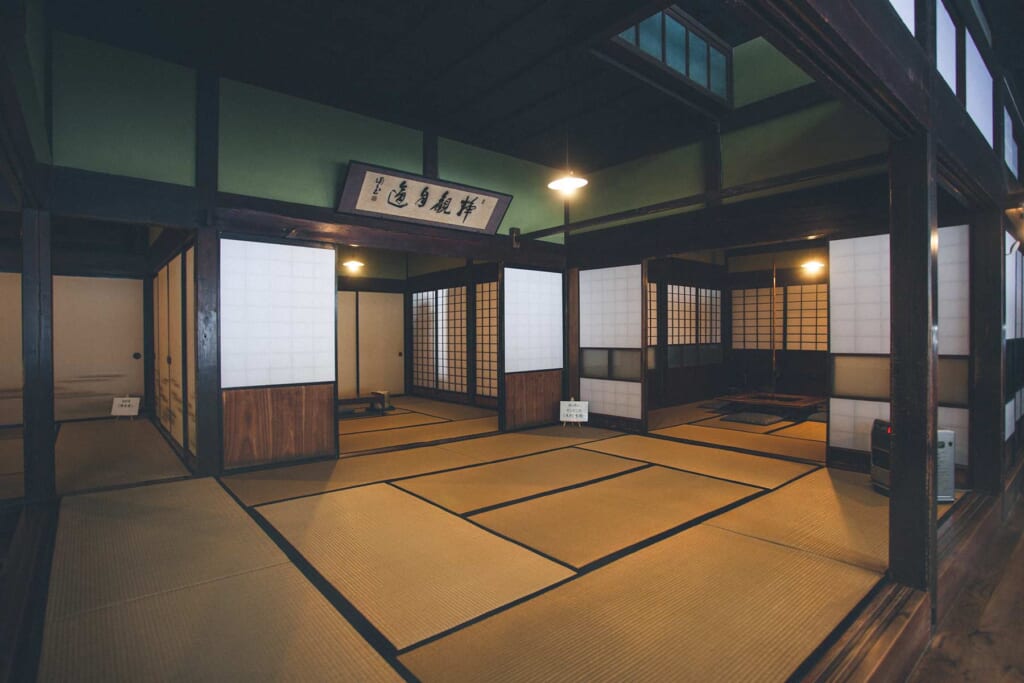
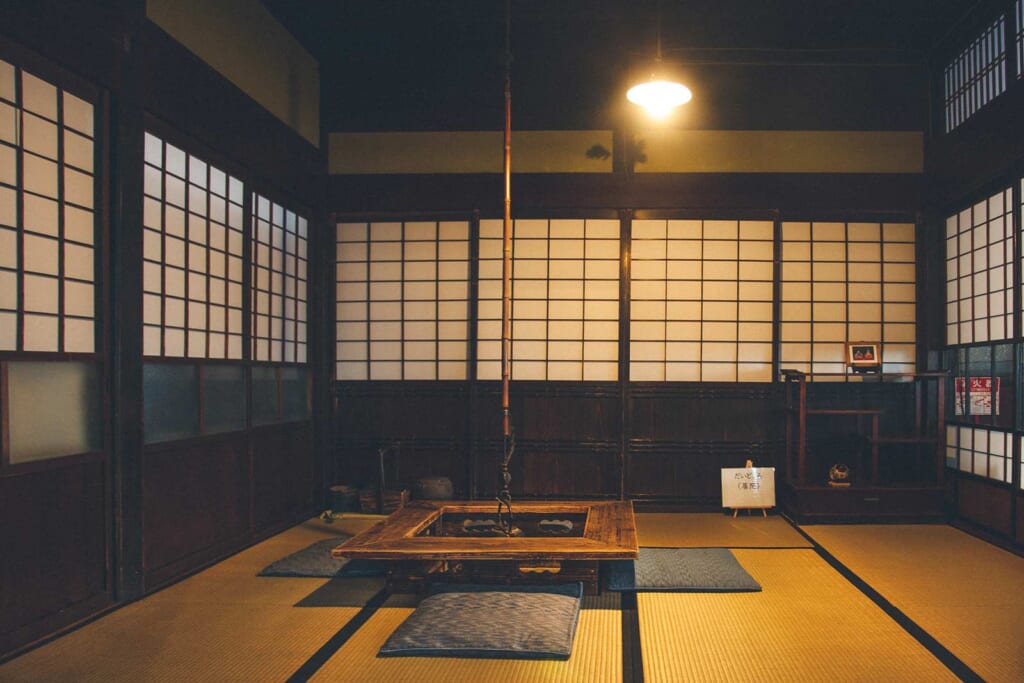
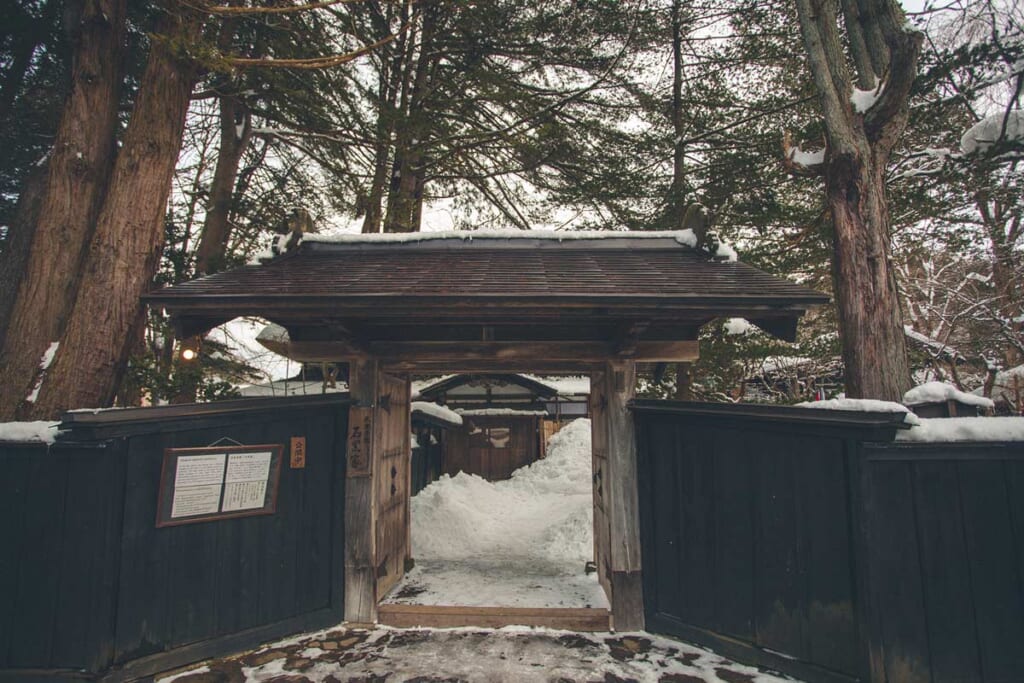
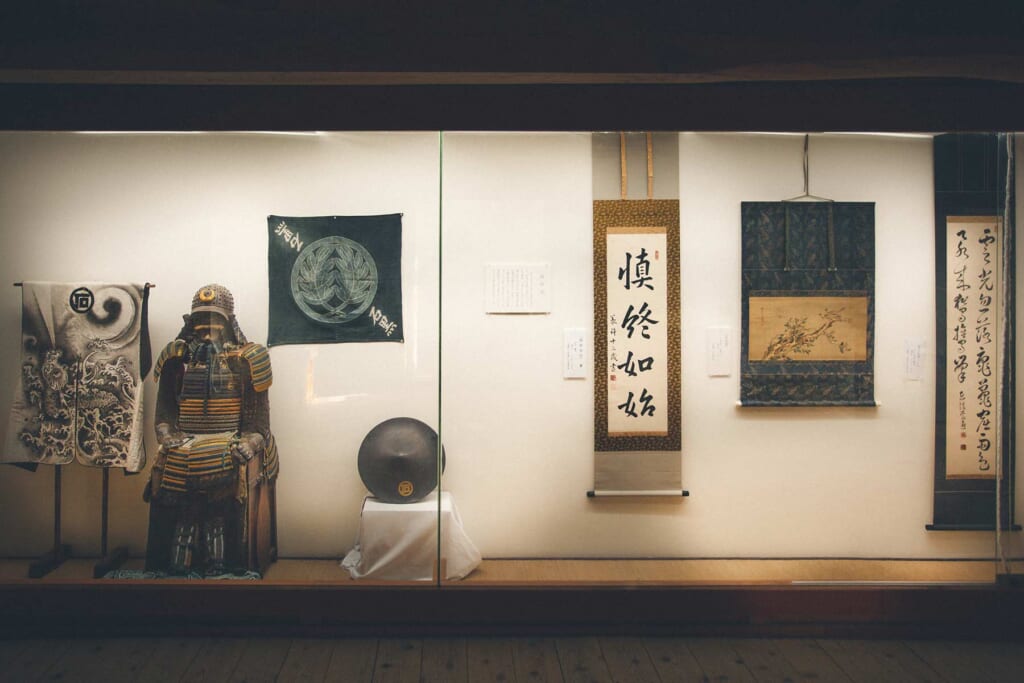

Ishiguro Family residence has four different entrances, each once reserved to welcome different groups of visitors during its day. One was reserved for important guests such as the high-ranking officers of the ruling samurai clan, while the others were separated for the master of the house, remaining family members, and servants.
The well-preserved and spacious house also displays a large exhibition room of armor, clothing, and books belonging to the Ishiguro Family, including sections from the first anatomical book published in Japanese, Kaitai Shinsho by Sugita Genpaku, in 1774.
Japanese Soy Sauce Tasting Tour
Kakunodate was historically divided into two main quarters — the samurai and merchant districts. My next stop was the Ando Soy Sauce and Miso Brewery located in the merchant district. The brewery is still in operation in its original building dating to 1883, which is listed as one of Semboku City’s designated tangible cultural properties.
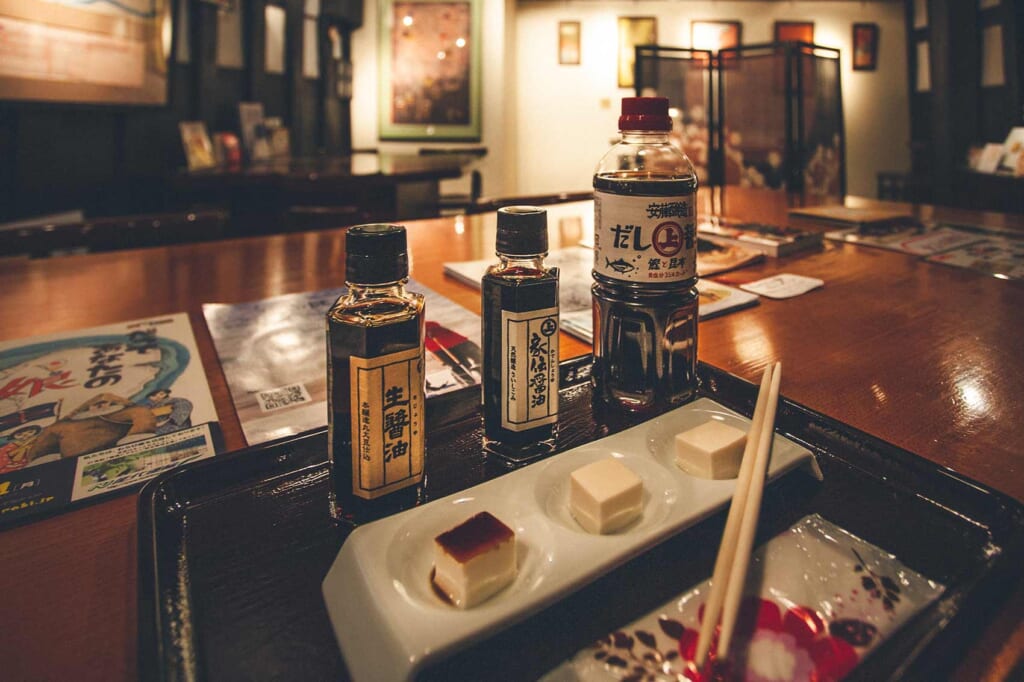
The historical Ando Brewery is a family-owned business belonging to Ando Family who has been residing in the area since the 18th century. What makes their 160-year-old brewery business special is their use of hand-brewing techniques and their commitment to using additive-free, natural ingredients.
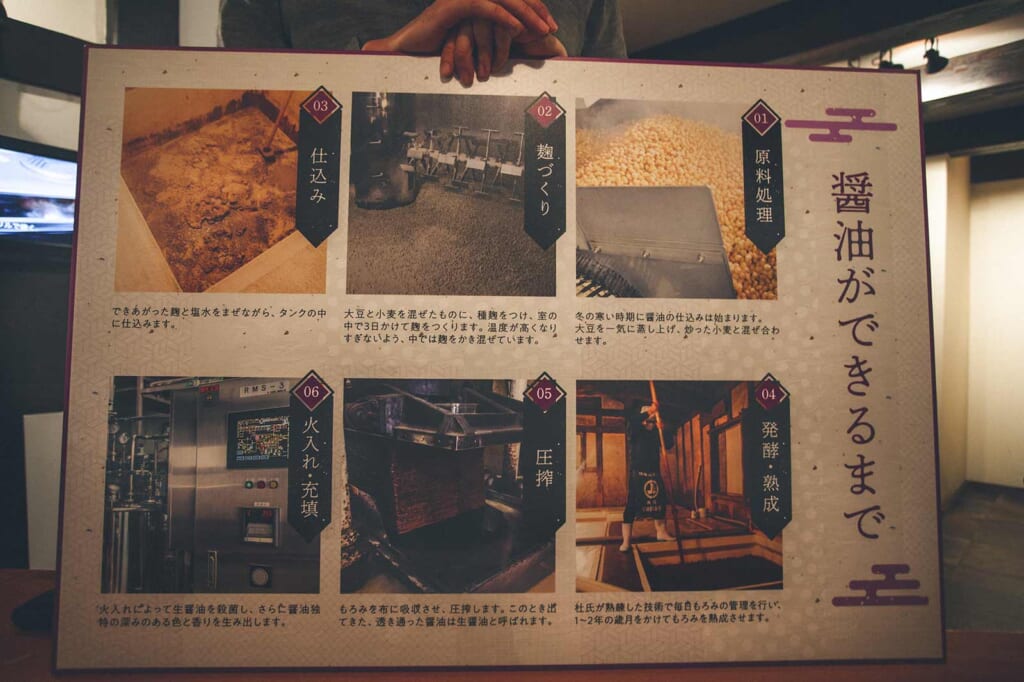
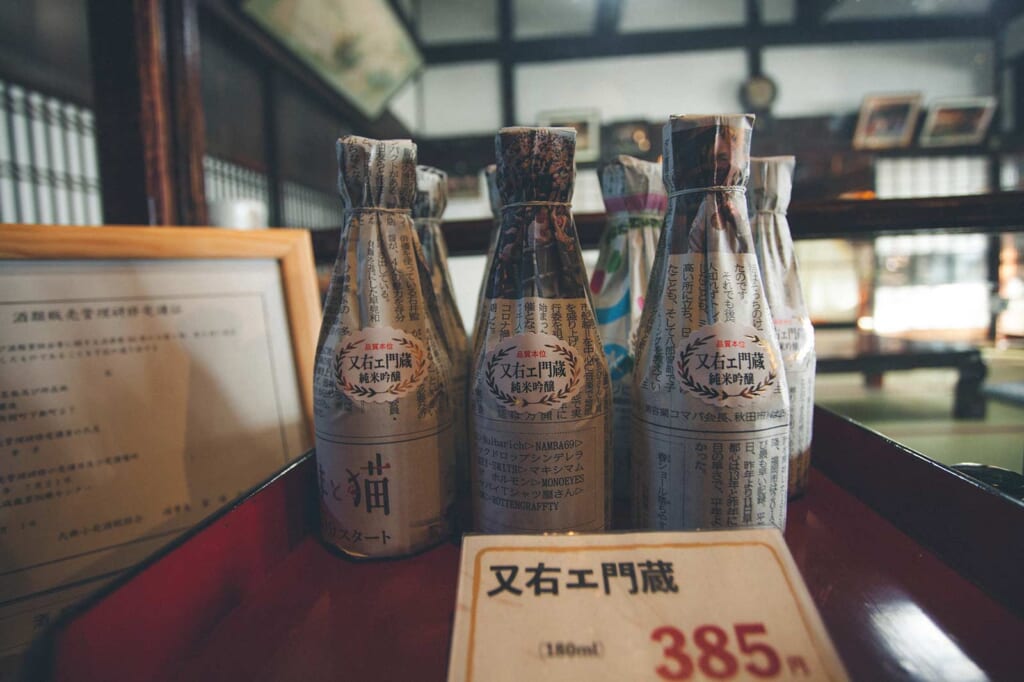
While the heritage building is reason alone to visit the brewery, learning about the brewing techniques behind Japan’s most used condiment followed by a tasting session was equally interesting. It is a process, especially when using the non-automated traditional techniques of Ando Brewery, that requires patience and continuous attention. Once the main ingredients of soybeans and malted rice are mixed for fermentation, the storage period takes up to a year with a daily manual check before the sauce is ready for consumption.
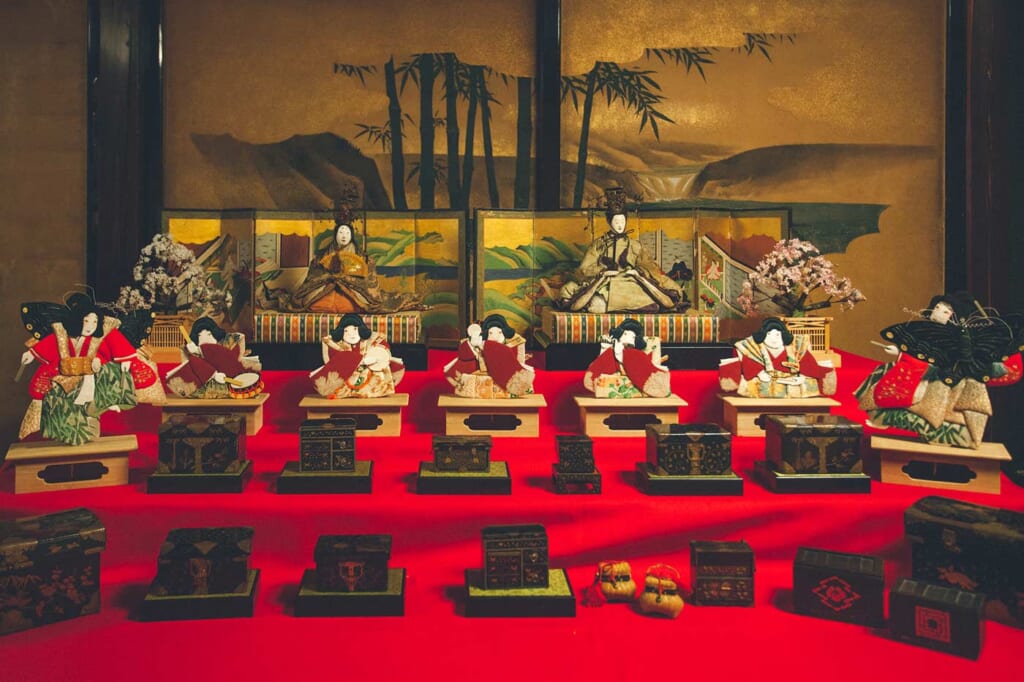
I visited the brewery in mid-January when the family’s collection of handmade dolls was on display for the Hina Matsuri Girls’ Day celebrations. The family’s collection gradually expanded with each new addition of a girl to the family resulting in an impressive display, which can be viewed from January to March at Ando Brewery.
Global Design Meets Japanese Cuisine at Hyakusuien Restaurant
I hesitate to tell you about my final stop in Kakunodate, if only to not spoil the surprise that’s in store for you if you visit. In a country where a restaurant’s atmosphere can compete for diner’s attention from its exquisite world-class cuisine, Hyakusuien Restaurant certainly deserves special recognition in this category.
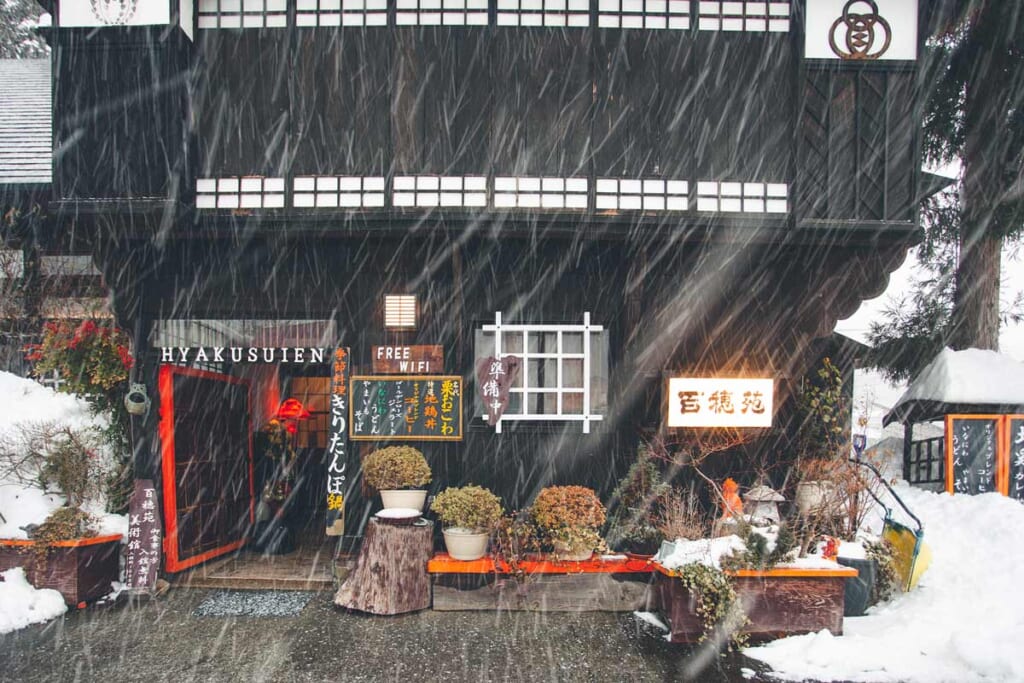
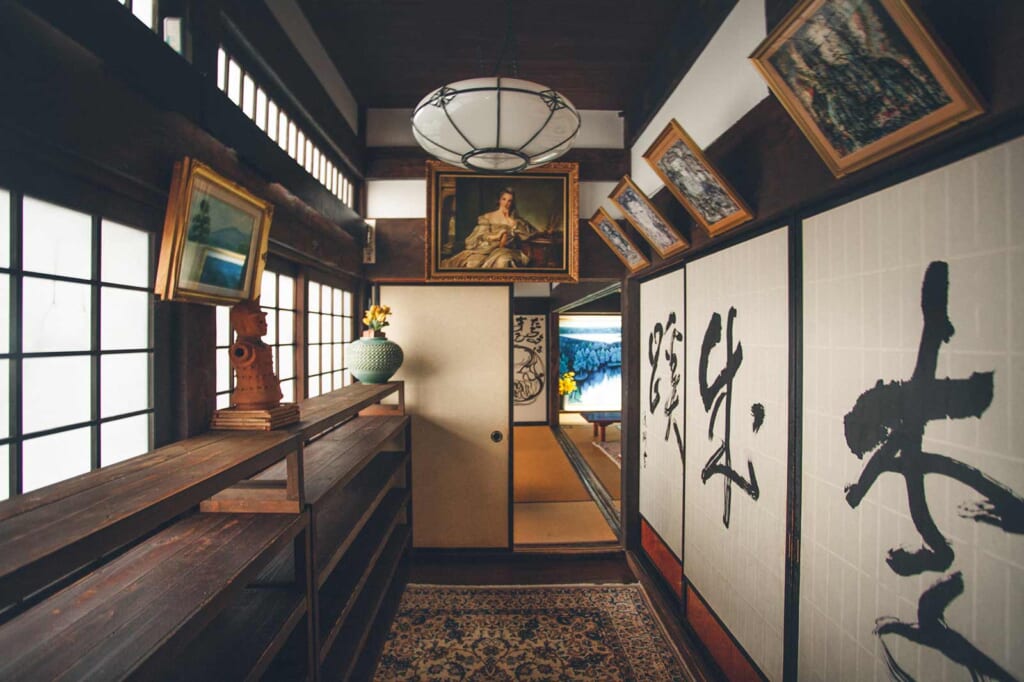
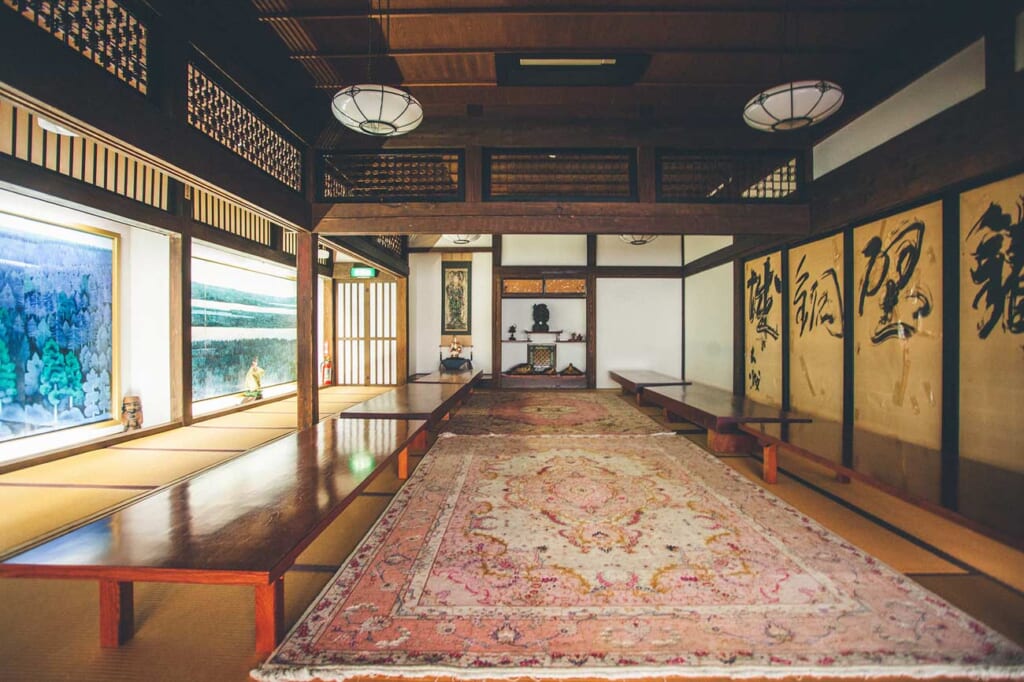
This iconic Kakunodate establishment has 420 years of history in an old house formerly owned by a matagi, a traditional bear hunter of the region. The current owner is a former diplomat, as evidenced by the worldly relics and paintings within the restaurant, including gorgeous Iranian carpets.
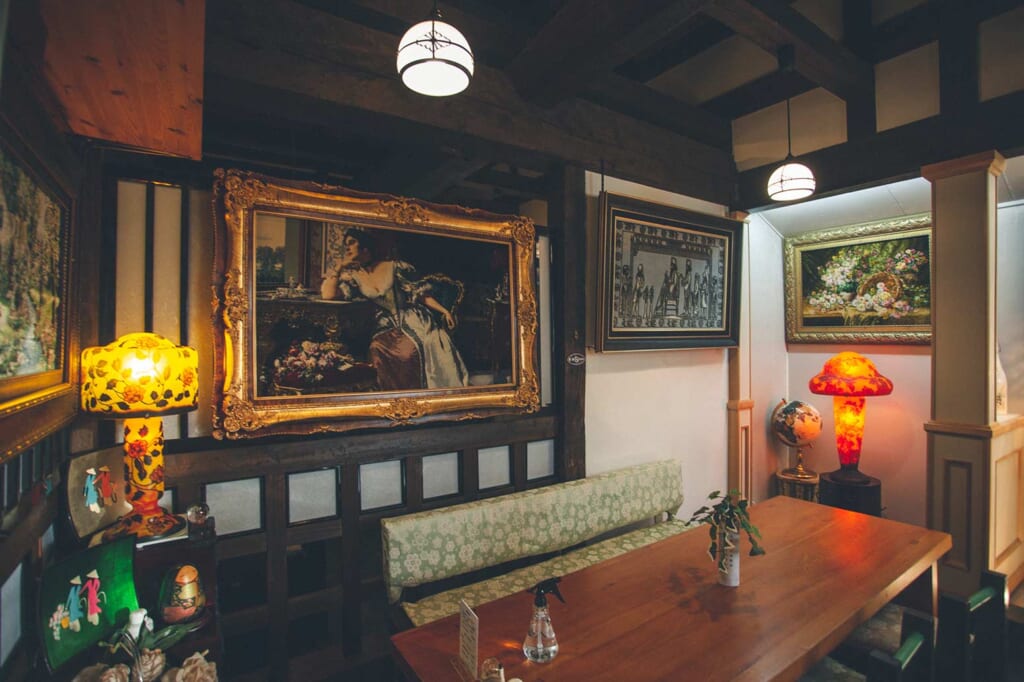
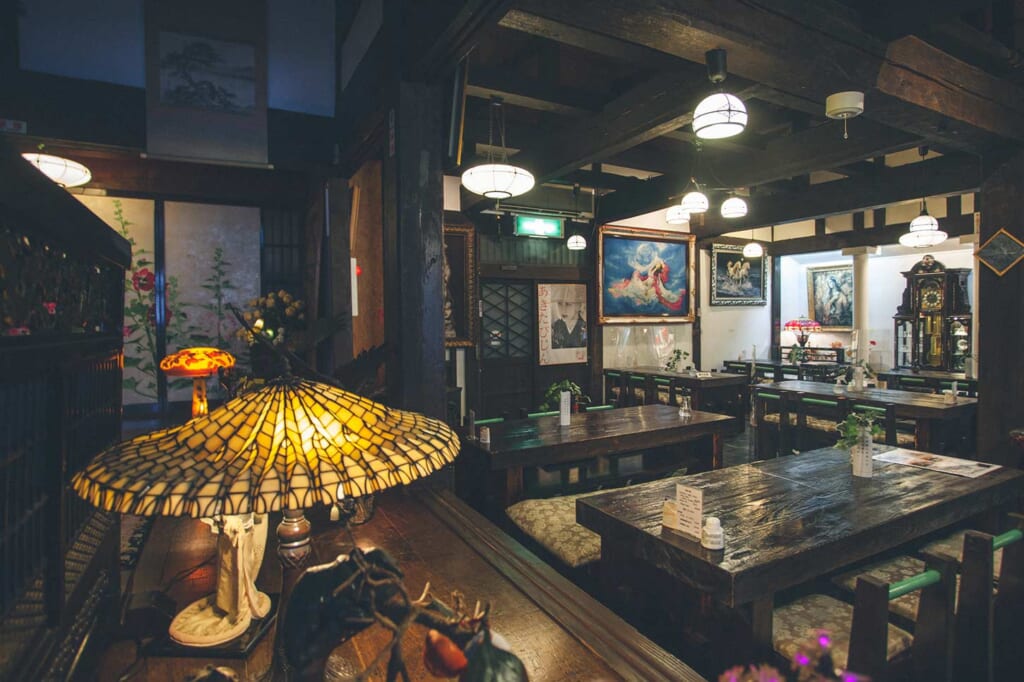
The restaurant’s highly praised traditional Japanese cuisine features local Akita dishes and is open daily for lunch and dinner (with is reservation only.)
Tazawako: A Farmstay, Snowshoe Adventure, and Addictive Onsen
My next destination was Tazawako — a region rich in pristine nature and home to Japan’s deepest lake at 423-meters, Lake Tazawa (田沢湖, also known as Tazawako). I checked in to Sounosuke Farmhouse near the lake, planning for an early start the next day to explore the area.
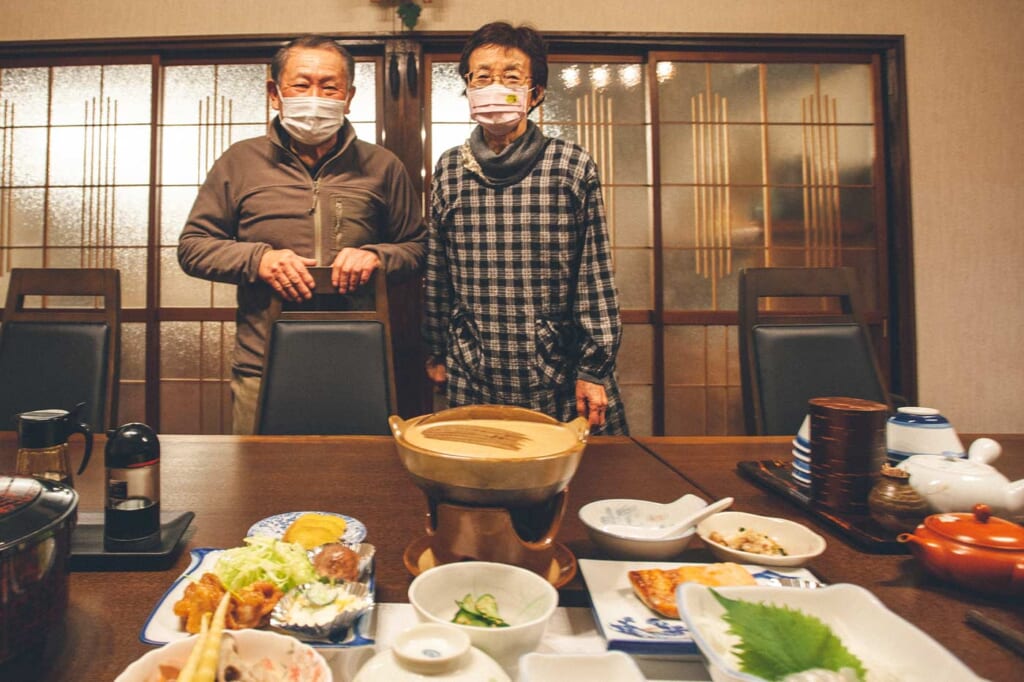
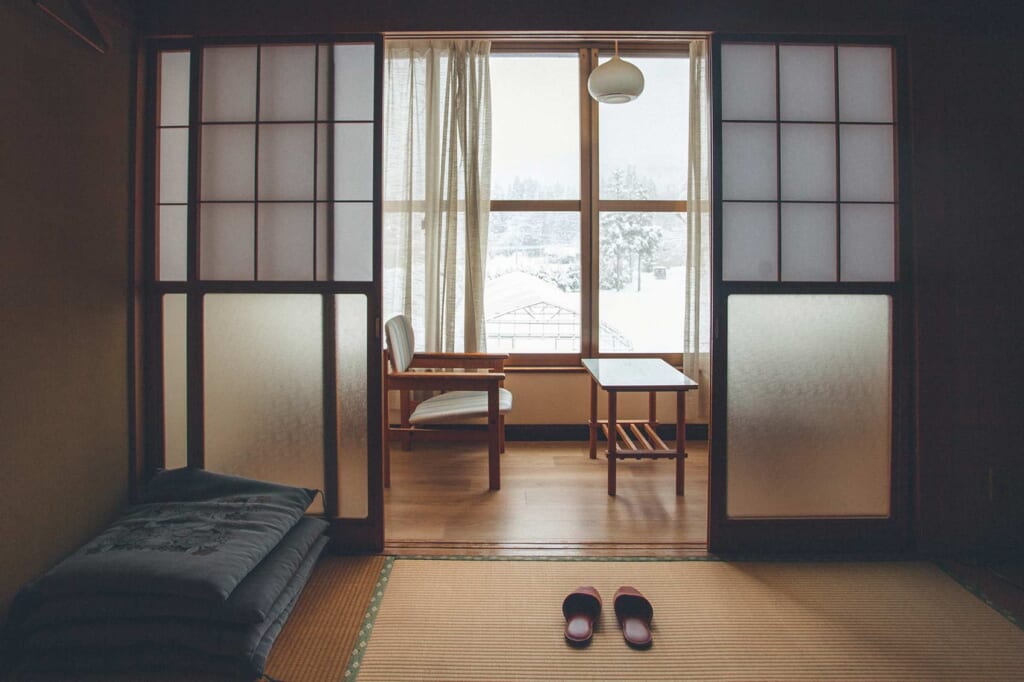
After being greeted by the friendly owners and the heartwarming family atmosphere, I settled in my comfortable Japanese-style room with large windows and the view of the snow-covered fields. Knowing that one of the most rewarding aspects of a traditional Japanese-style accommodation is the food, I was happy when the clocks hit the 6:00 pm dinner time.
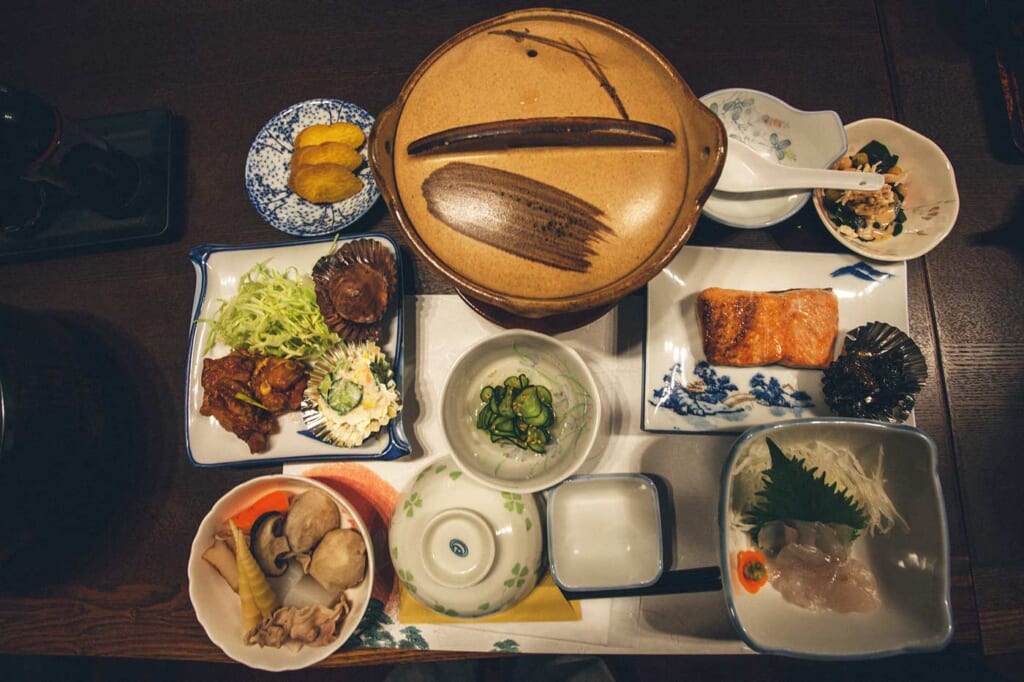
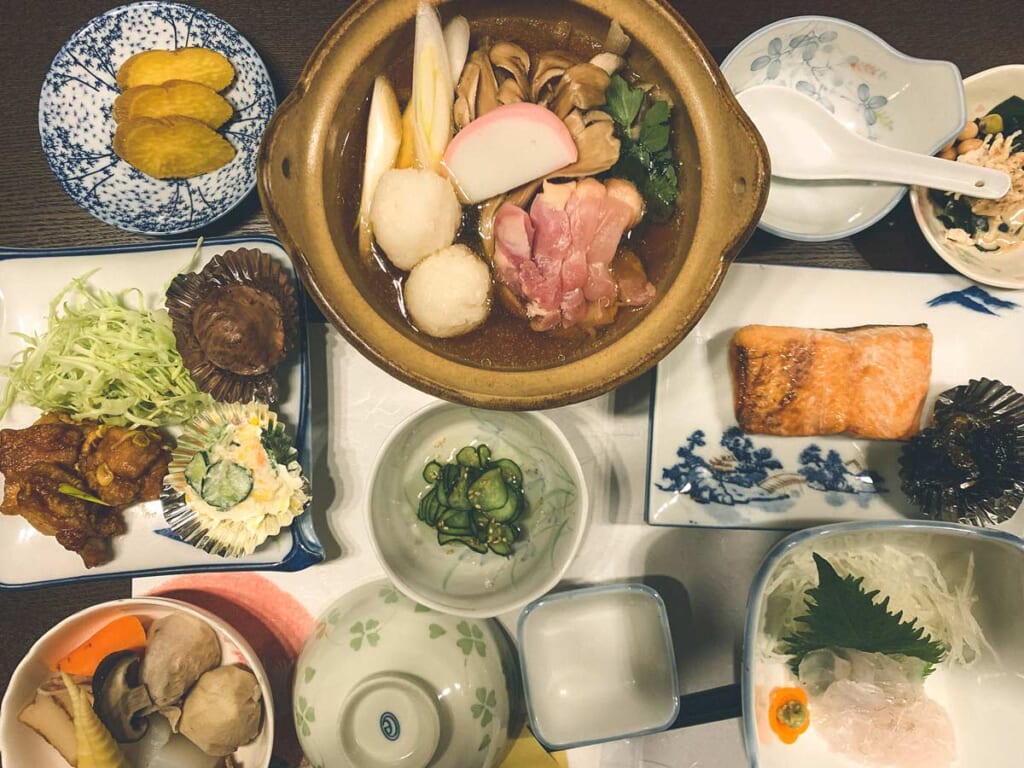
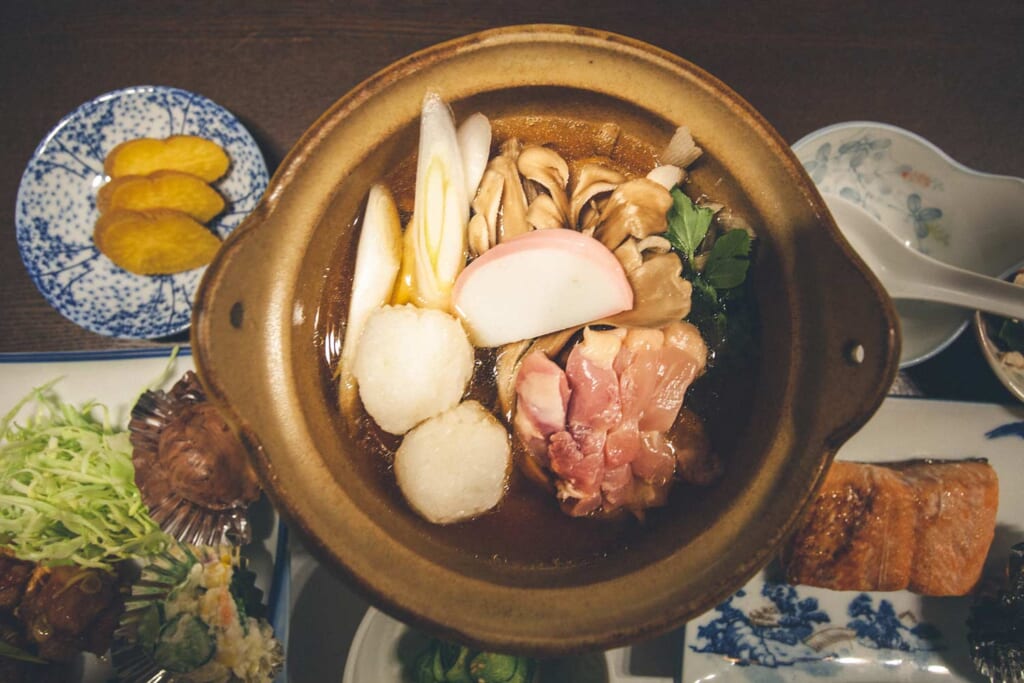
The dinner featured a nabe hot pot with chicken, seasonal vegetables, and wild edible plants along with an assortment of cooked and raw fish dishes. It was a refreshing, warming, and delicious way to end the day.
Go on a Snowshoing Adventure in Tazawako
After an early and filling Japanese-style breakfast at 7:00 am, I was ready for the day ahead — snowshoeing in the beech forests surrounding Lake Tazawa.
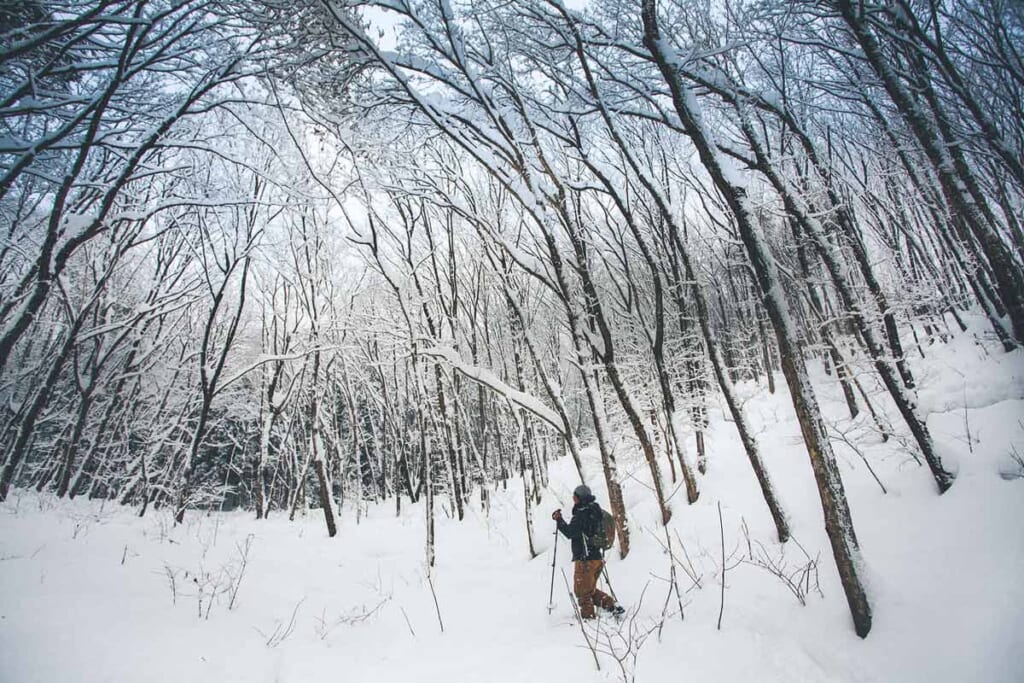
Snowshoeing is one of the best ways to enjoy the winter scenery surrounding Lake Tazawa as it allows you to explore the dense forest at a pace slow to truly enjoy the scenery. There are numerous trails leading to viewpoints for the breathtaking views of Lake Tazawako.
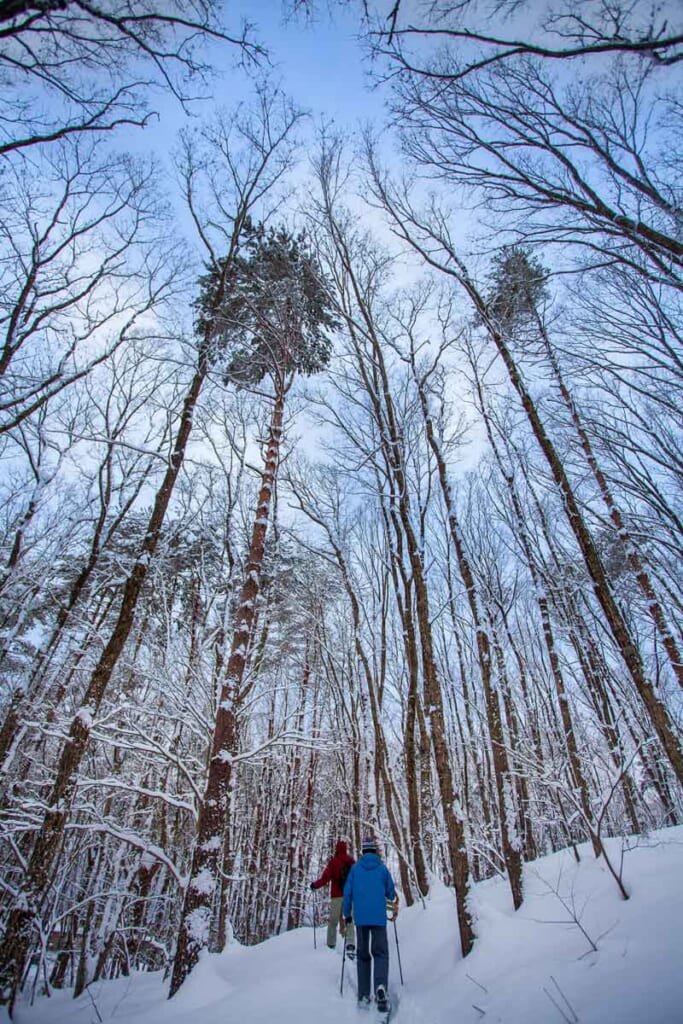
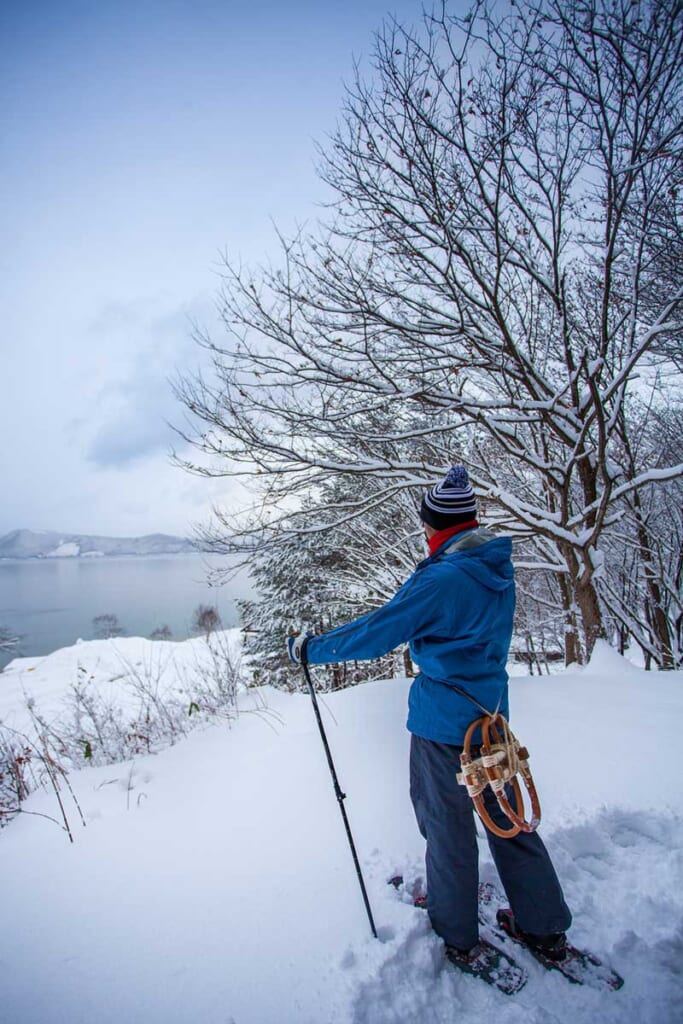
I joined the guided snowshoeing tour of Semboku City Rural Experience Association that visitors can book online. The local knowledge of my guide and his contagious enthusiasm about the region made all the difference. The warming coffee/chocolate break at a viewpoint was enhanced with his stories of bear hunters who often patrol the region wearing Japanese-style snowshoes.
After a two-hour snowshoeing session, it was time for lunch. Aoni Sansou Ryokan, a recently renovated inn located right next to Mizusawa Onsen, offers tasty lunch menus in a bright and modern environment. I enjoyed the filling niku nabe meat pot set and the refreshing atmosphere mixing izakaya and lounge-style decoration.
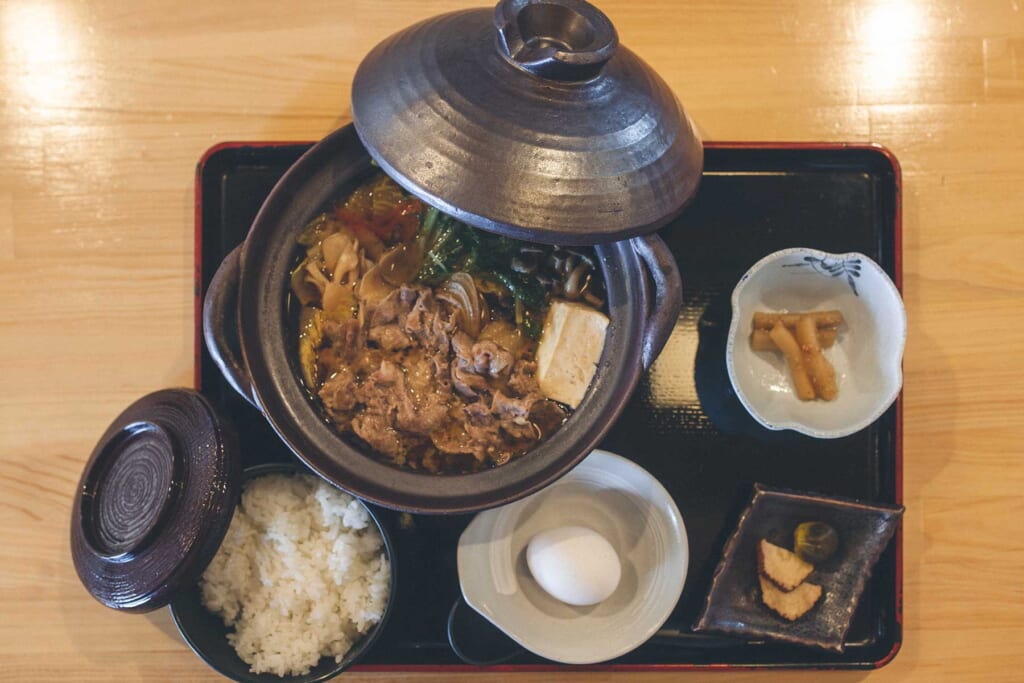
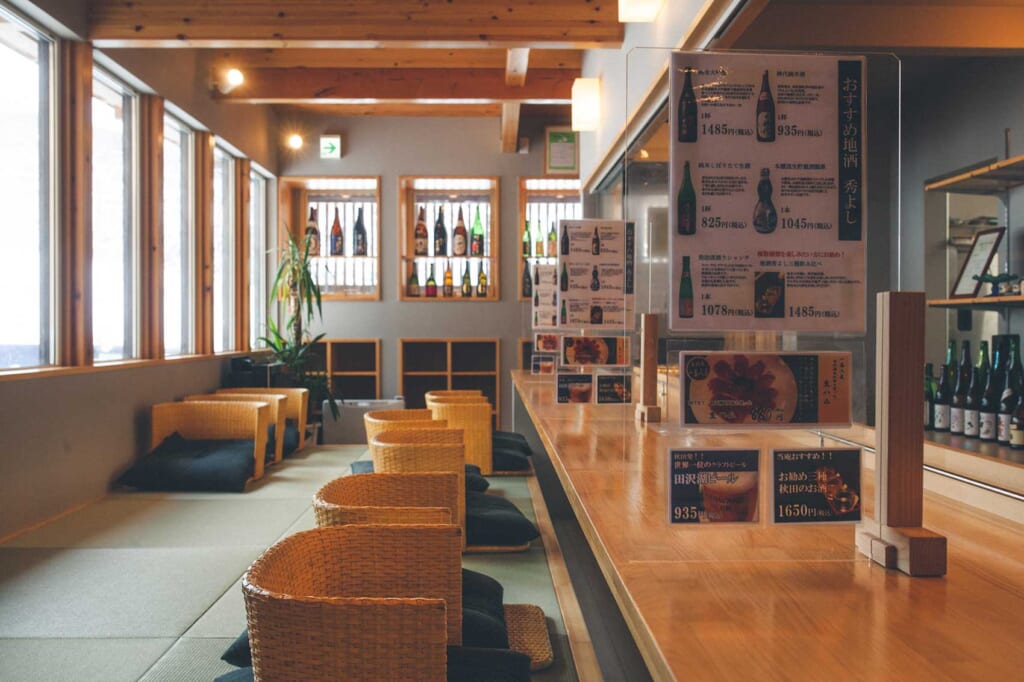
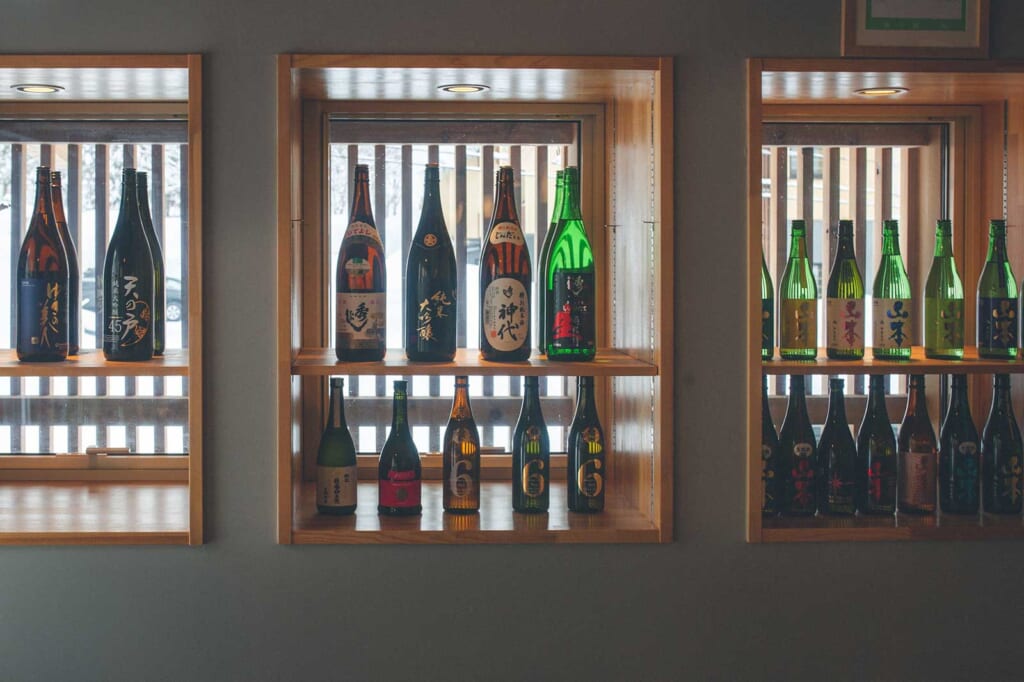
Heavenly Hot Springs at Mizusawa
Within minutes after finishing my lunch, I was dipping into the outdoor bath of the next door Mizusawa Onsen. The Mizusawa Onsen water originates in the natural springs formed at 1,000-meter altitudes on the hills of Mount Akita-Komagatake (秋田駒ヶ岳). The water is rich in calcium and sulfur and known to have healing effects. Day visits cost 600 yen per person.
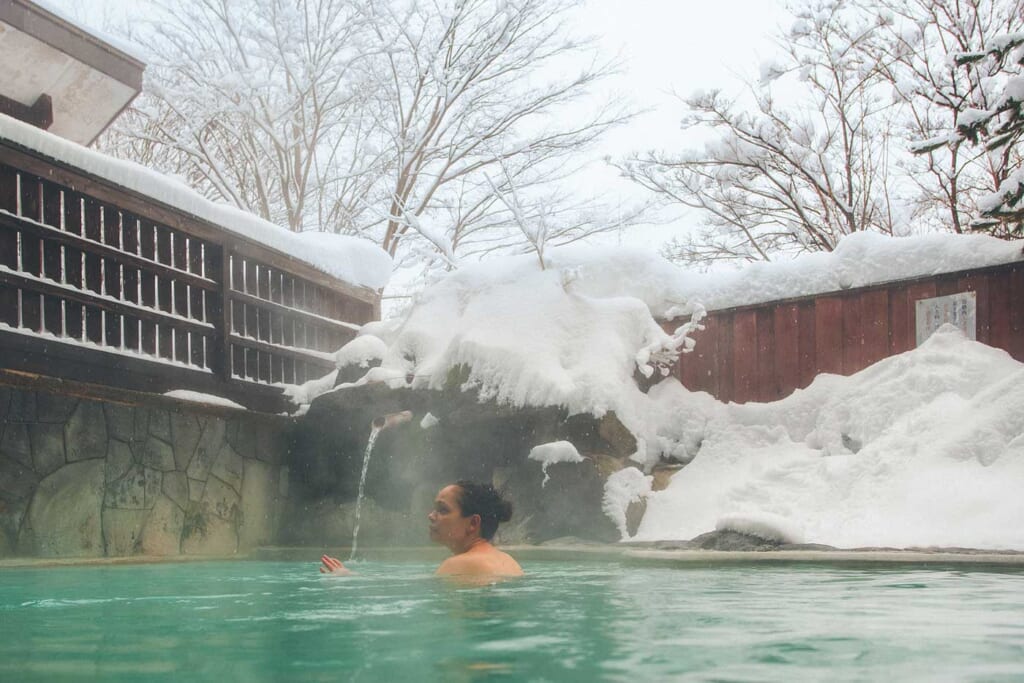
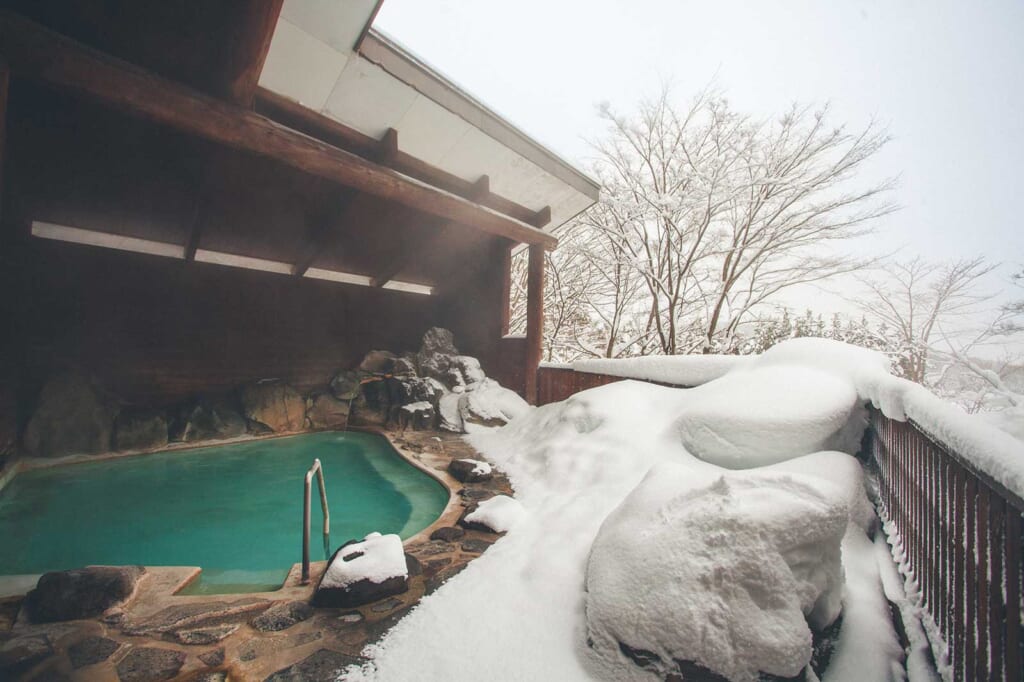
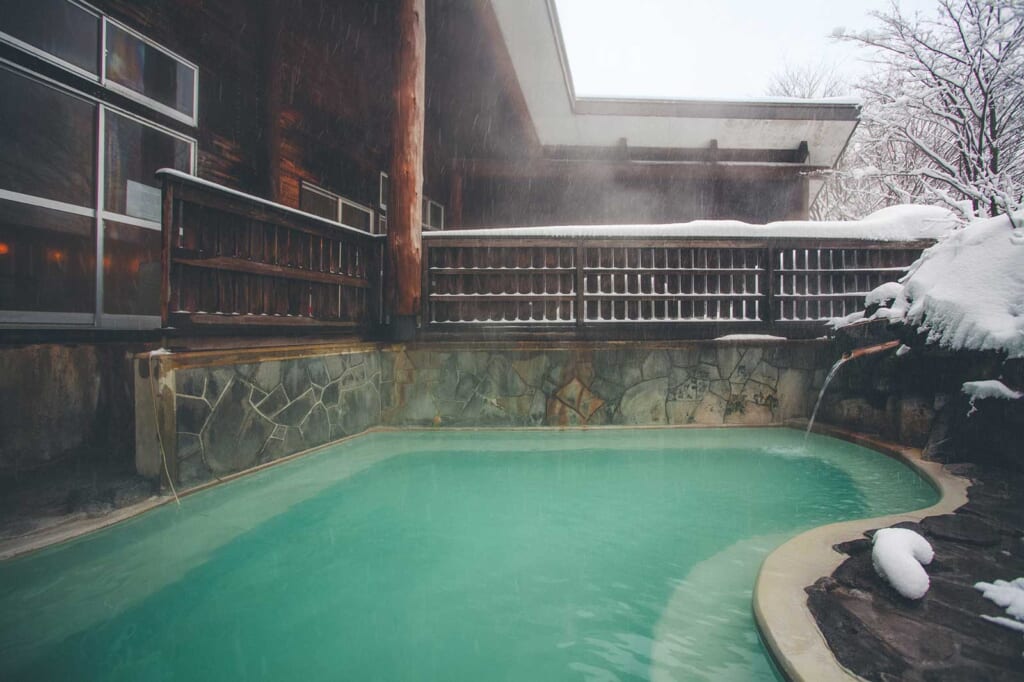
With the water’s inviting color and the dense steam, I was hesitant to leave the hot indoor bath and step out in the cold winter air. But once I did, I immediately experienced the addictive and shocking trill that comes from transitioning between cold outdoor temperatures and the onsen heat, reversing the famous Finnish sauna method (which transitions from sauna to cold water).
Nyuto Onsenkyo: Where the Winter Dreams Come True
Mizusawa Onsen was my first onsen stop on this trip and the warm-up act for my next destination: Nyuto Onsenkyo, a nature and onsen lovers’ dreams come true. I’d previously visited during the autumn colors season and had since been looking forward to a winter visit.
The area is home to seven different onsen facilities tucked into the dense forests of Nyuto Onsenkyo. While the five facilities open during the winter are close enough for a fun onsen hopping experience, each facility draws its waters from a different spring, making each bathing experience unique.
As I walked the narrow trail guarded by thick snow walls to reach Karakonoyu in Ganiba Onsen, I was sure I had already seen all the beauty that Semboku had in store for me. Little did I know that the trail would lead to the most beautiful winter scenery that I had seen in my life. The wooden cabin and the onsen pond that greeted me felt like a scene from a postcard coming to life making me fumble between fantasy and reality. It was a sight so alluring that, I am afraid, it set the bar impossibly high for my future winter escapades.
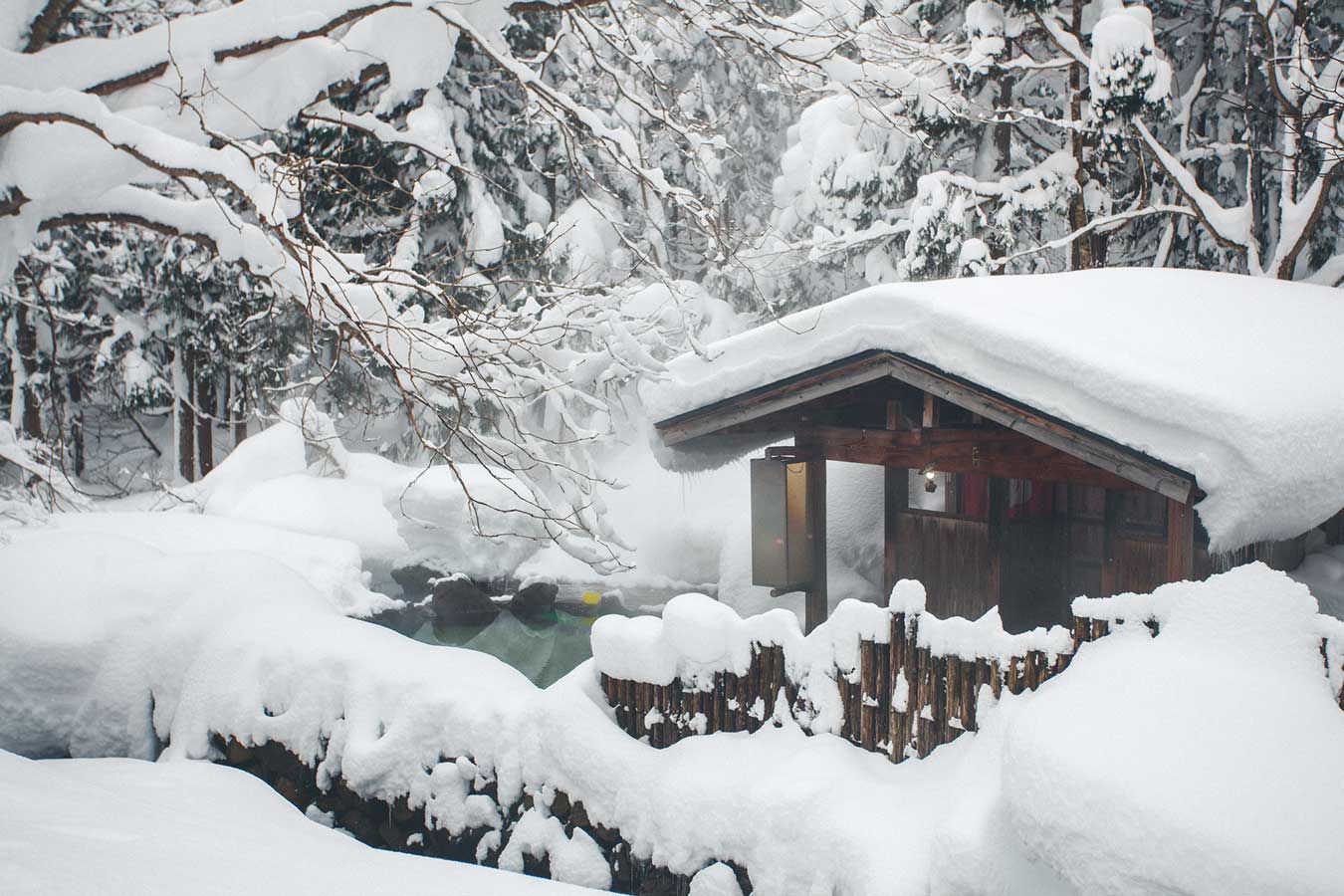
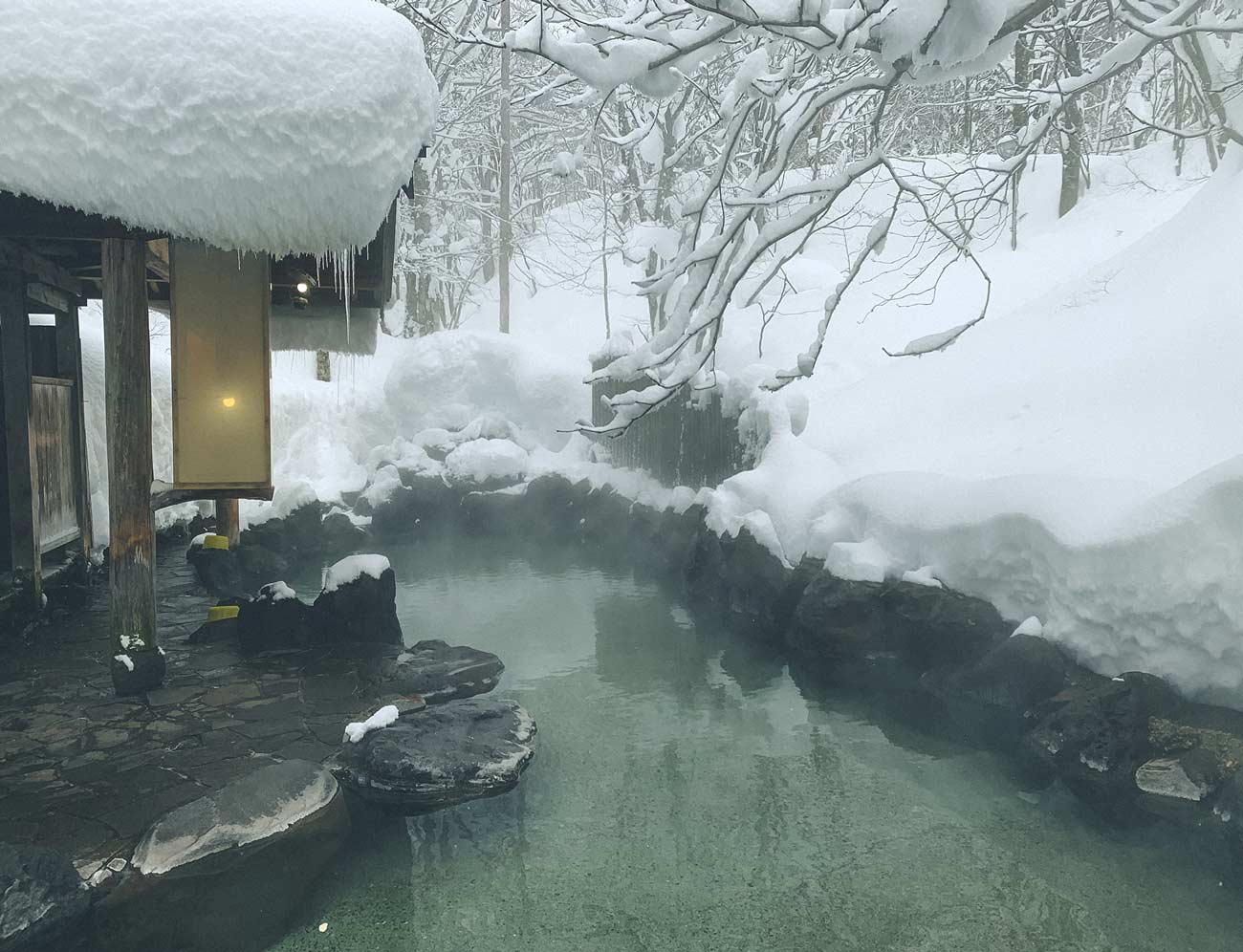
Taenoyu Onsen located next to a waterfall along Sendachi River is another facility combining scenic beauty with the healing onsen waters. The facility is especially popular for its spa features and a perfect representation of omotenashi – Japanese hospitality. Even during my short visit, I felt like the most pampered person in the world with smiling staff greeting me at every corner and offering me tea and sweets as I enjoyed the river views.
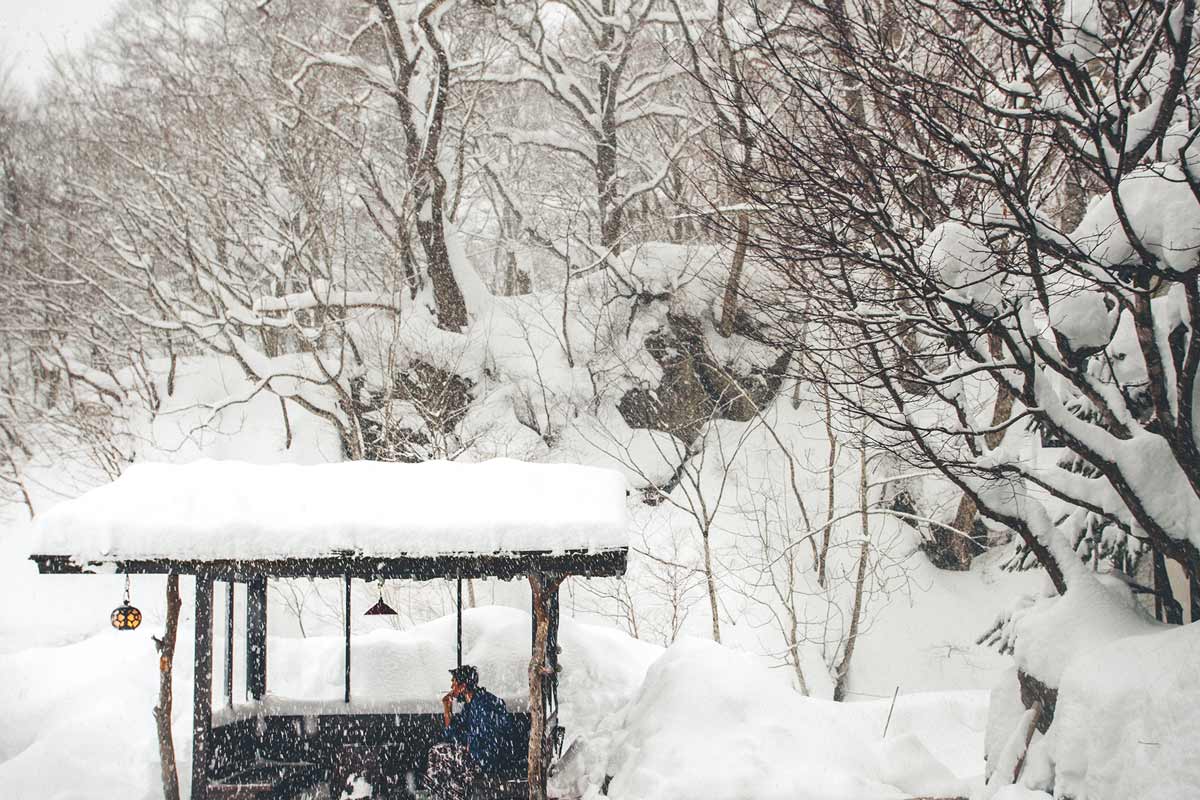
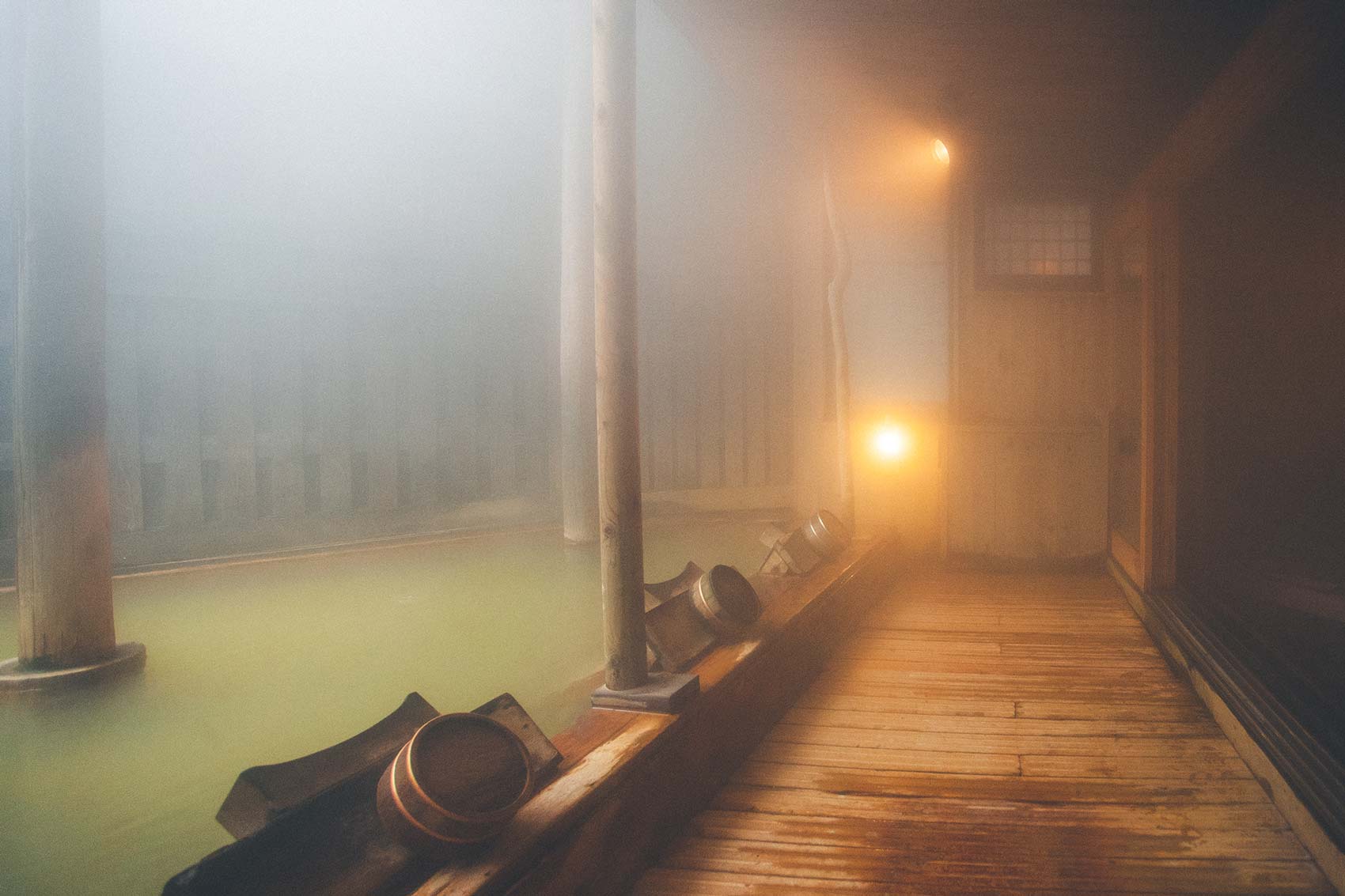
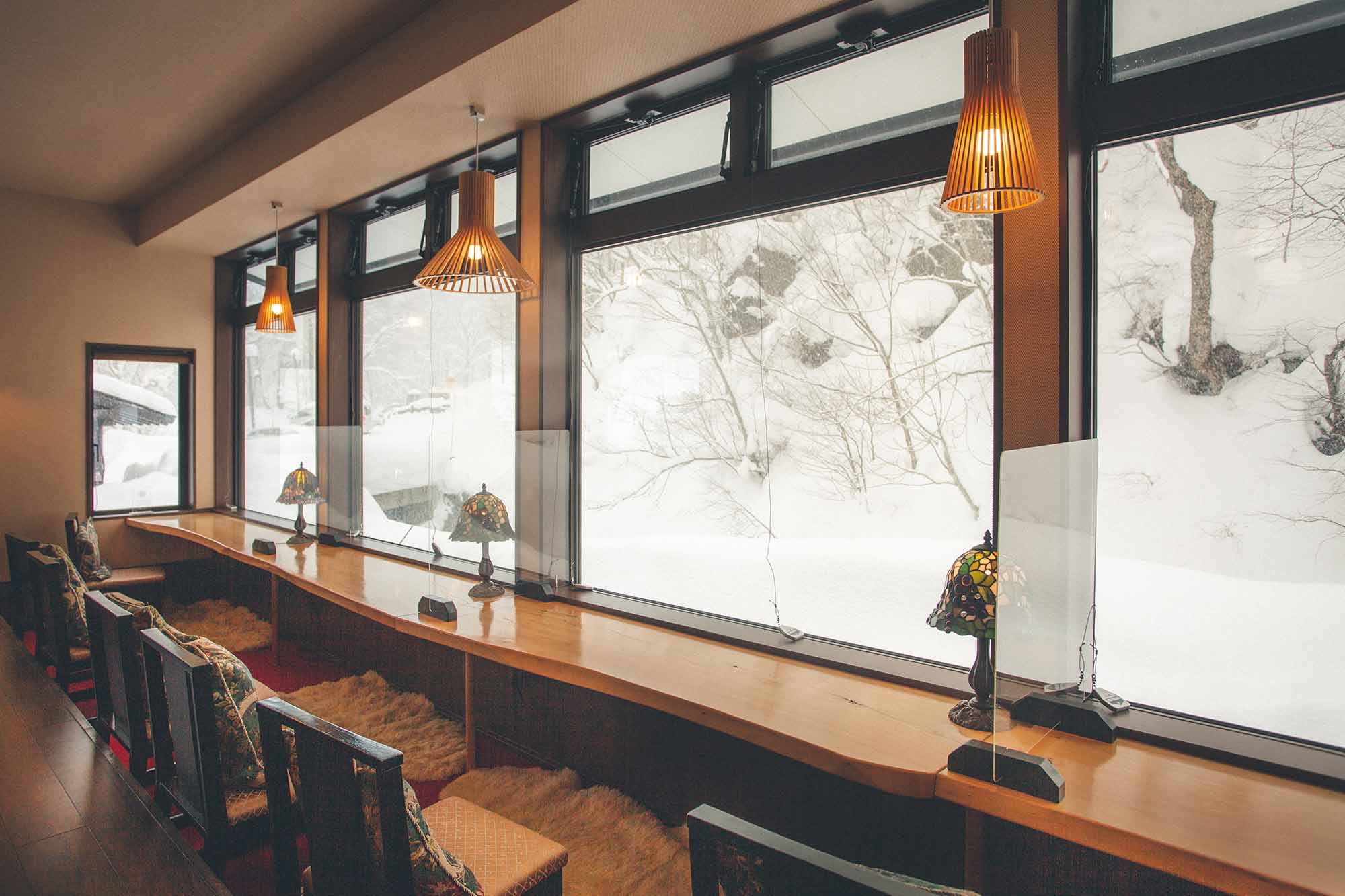
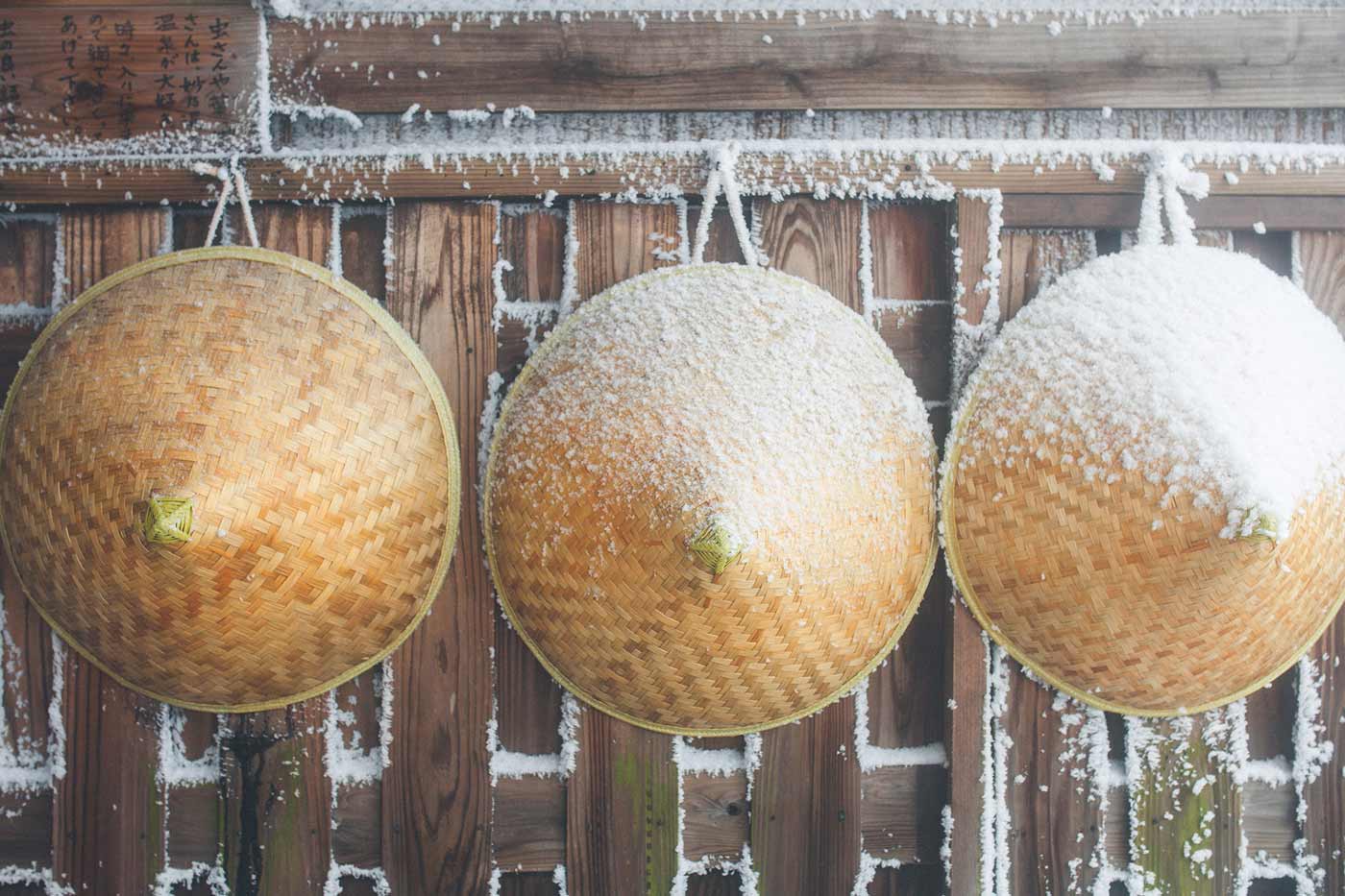
Kyukamura Nyuto Onsen Hotel is one of the most ideal and comfortable bases to explore the area, and where I would stay for the night. The hotel combines modern amenities with a rustic onsen experience with its large indoor and outdoor baths. The rooms are also spacious while the open buffet-style menu is carefully put together to appeal to all tastes and dietary preferences.
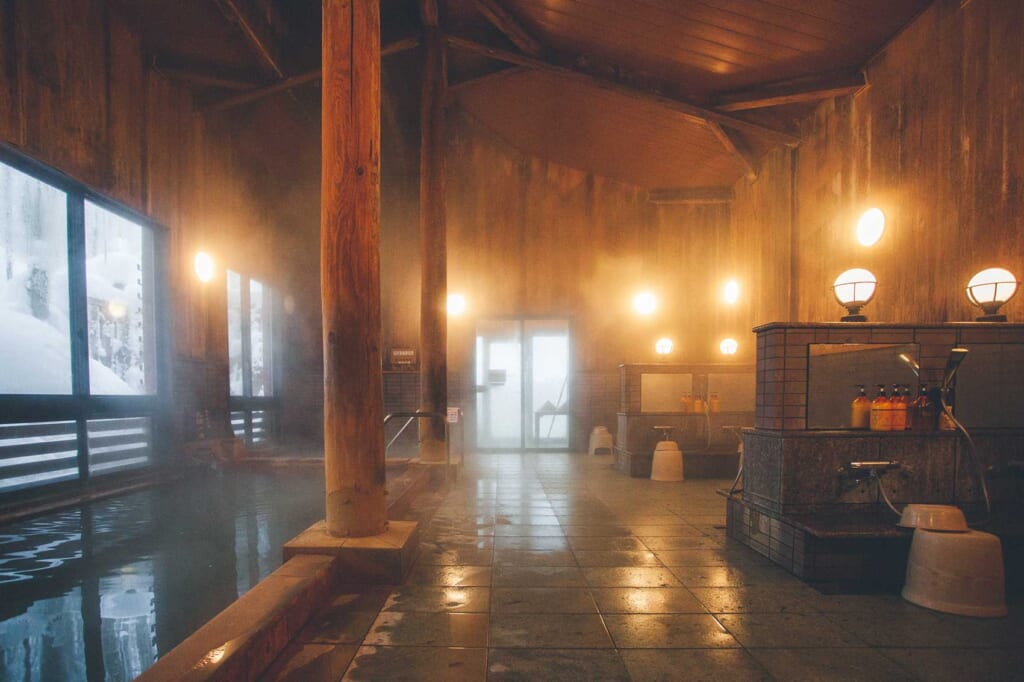
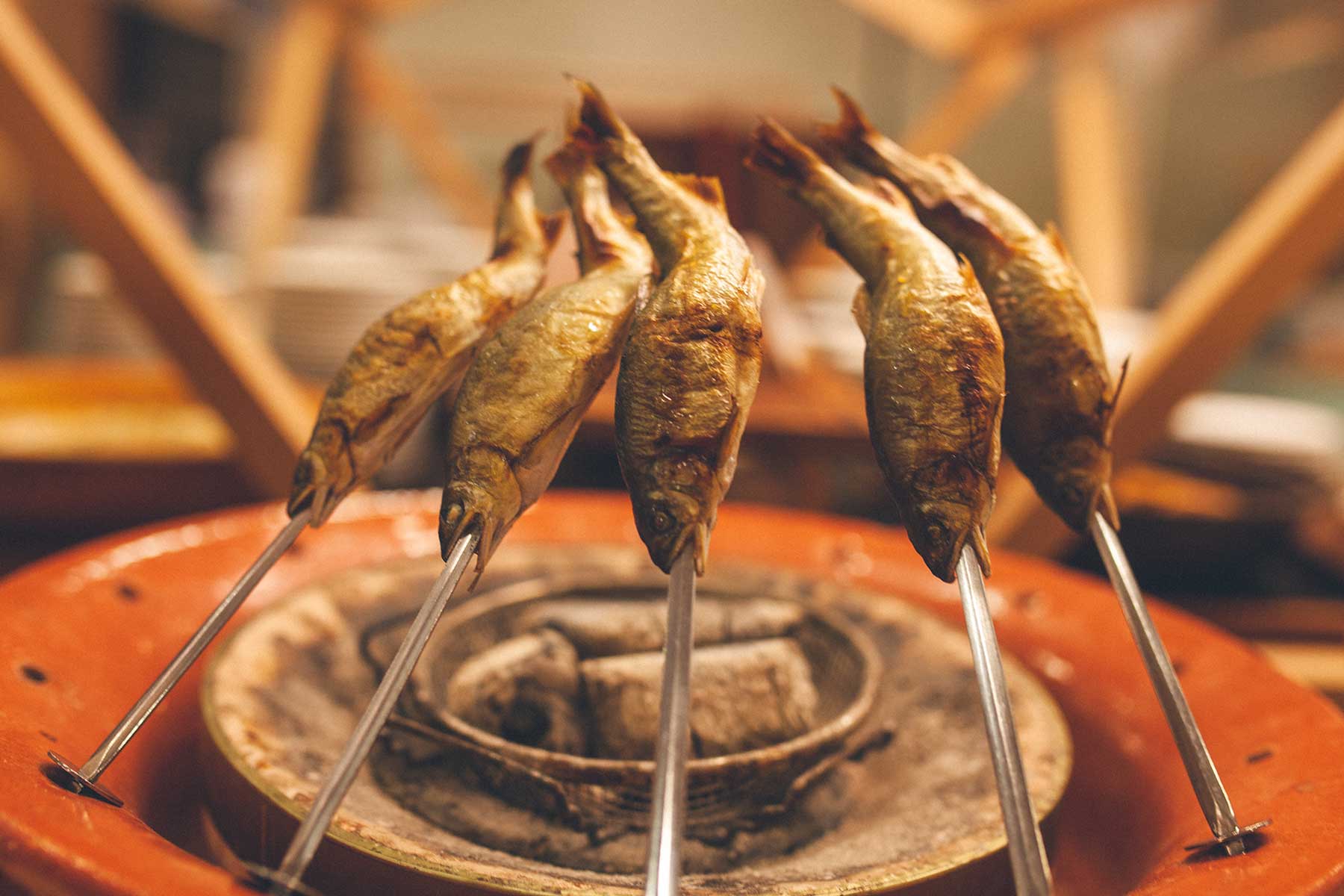
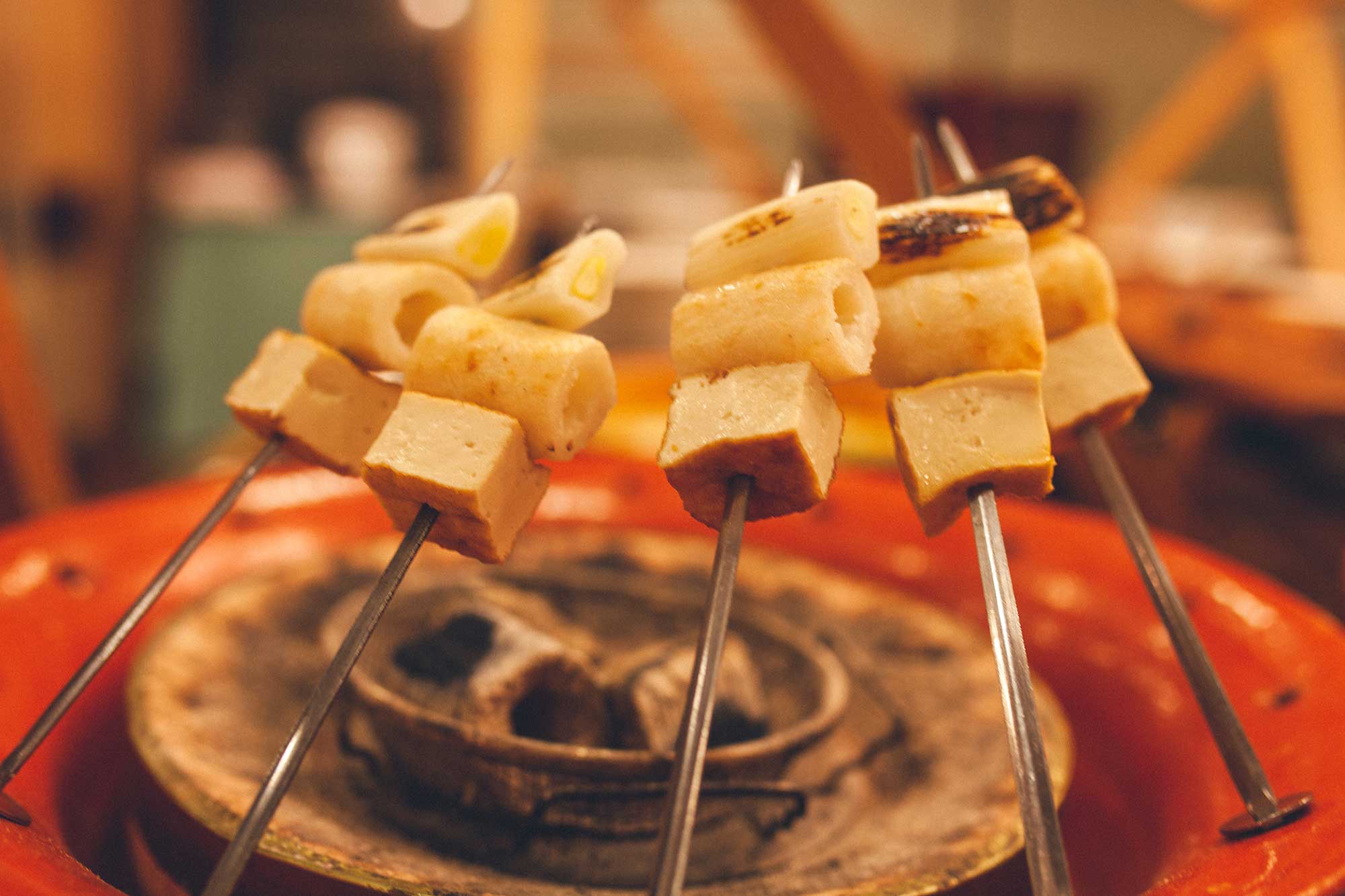
Onsen hopping is very popular among both day and overnight visitors. Visitors can purchase a daily onsen pass at all inns for 1,800 yen and cover all lodgings in the area. The Yumeguri-go onsen shuttle is also covered by the pass. It’ll be hard to miss the creatively designed bus featuring a barreled rotenburo bath on top which commutes between different inns five times a day during the winter season.
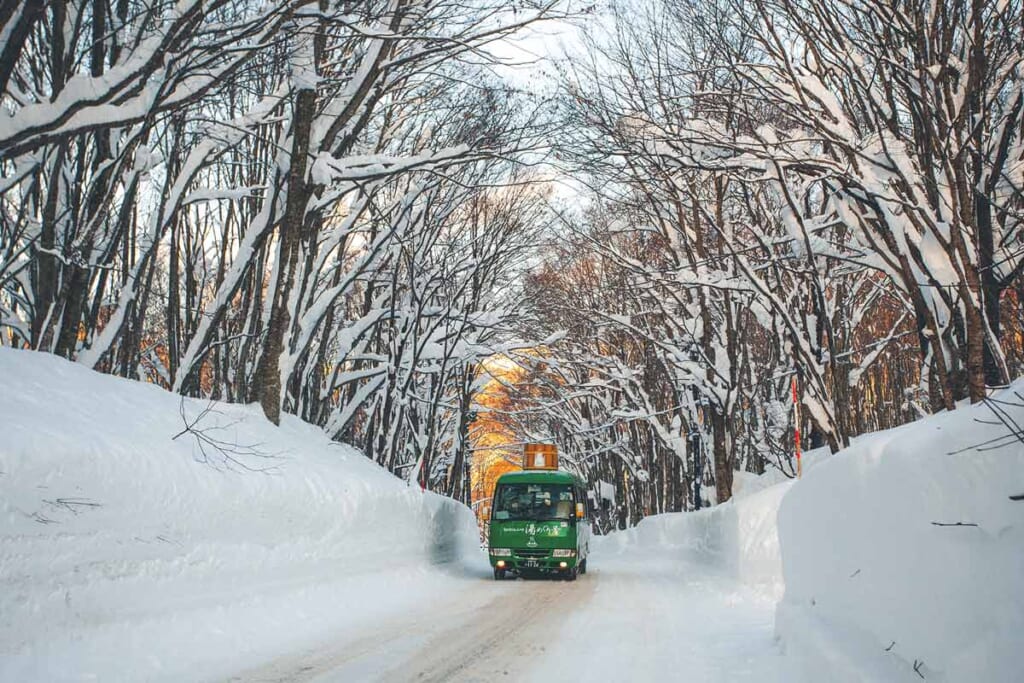
While I highly recommend at least an overnight stay in the area, all inns also offer lunch/onsen packages for the day visitors.
Tazawako Snow Resort: Famous Japow
The final stop of my trip was Tazawako Snow Resort, which has hosted the Free Style Ski World Cup many times. This is one of the prime places to experience the famous Japow – Japan powder – luring skiers to the country every year from all over the world.
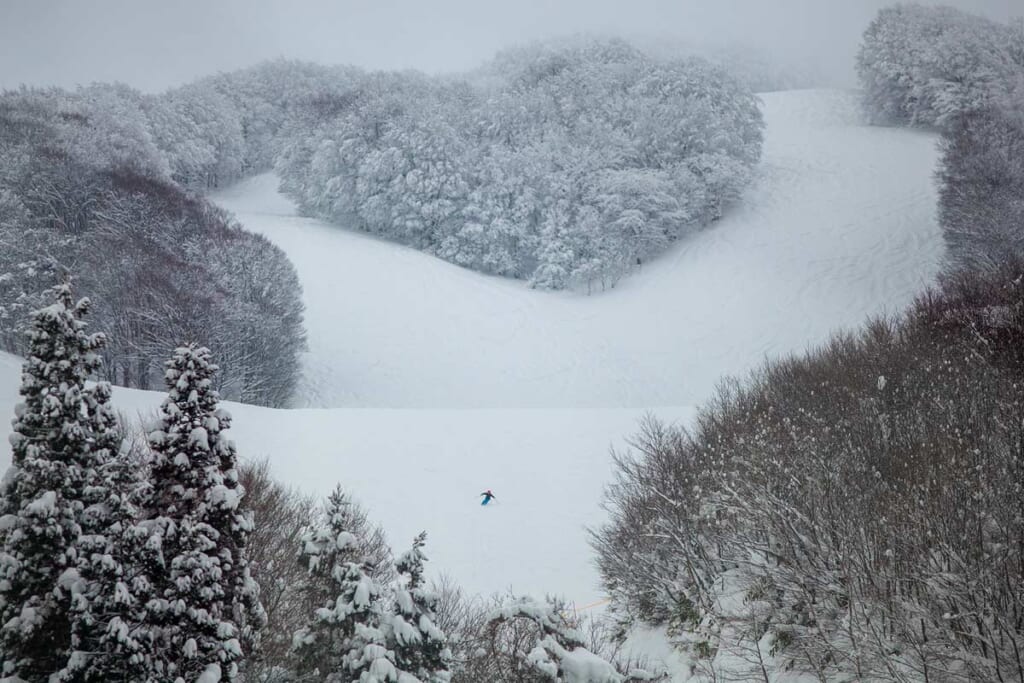
There are more than ten different courses catering to all levels of experience. For those not up for skiing, snowmobiling is another exciting way to effortlessly hit the slopes and become privy to the amazing lake scenery enjoyed by the skiers.
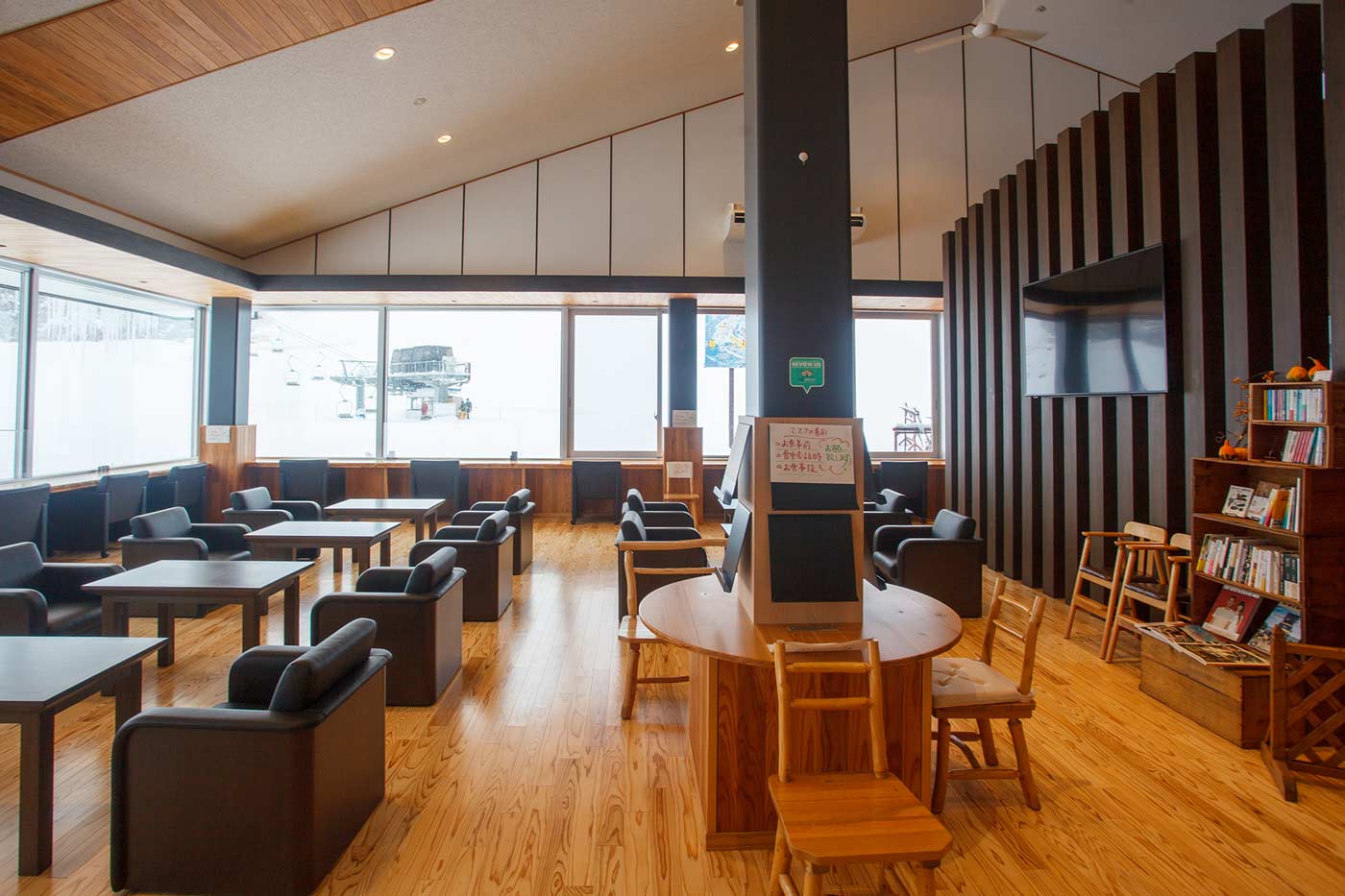
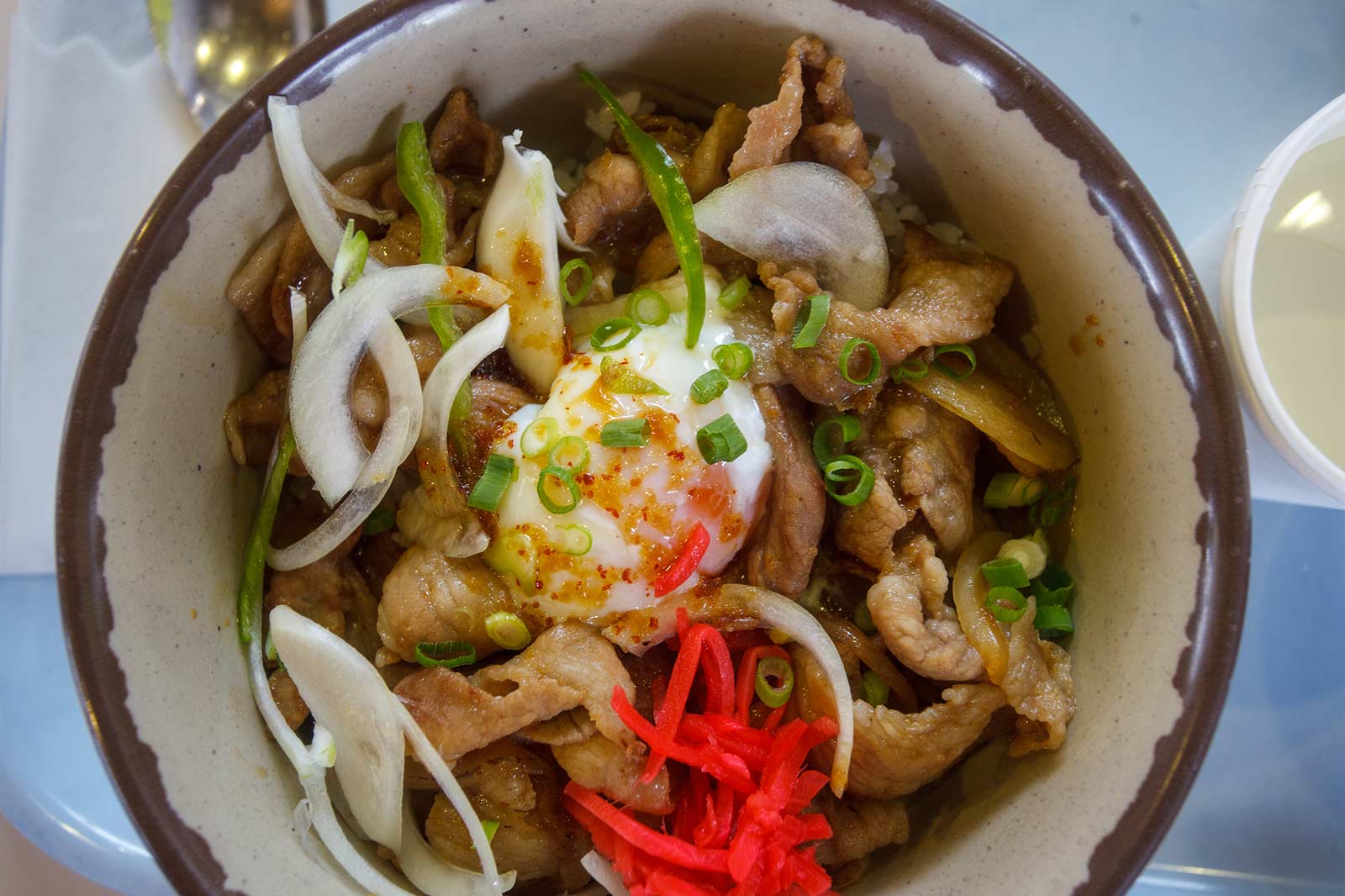
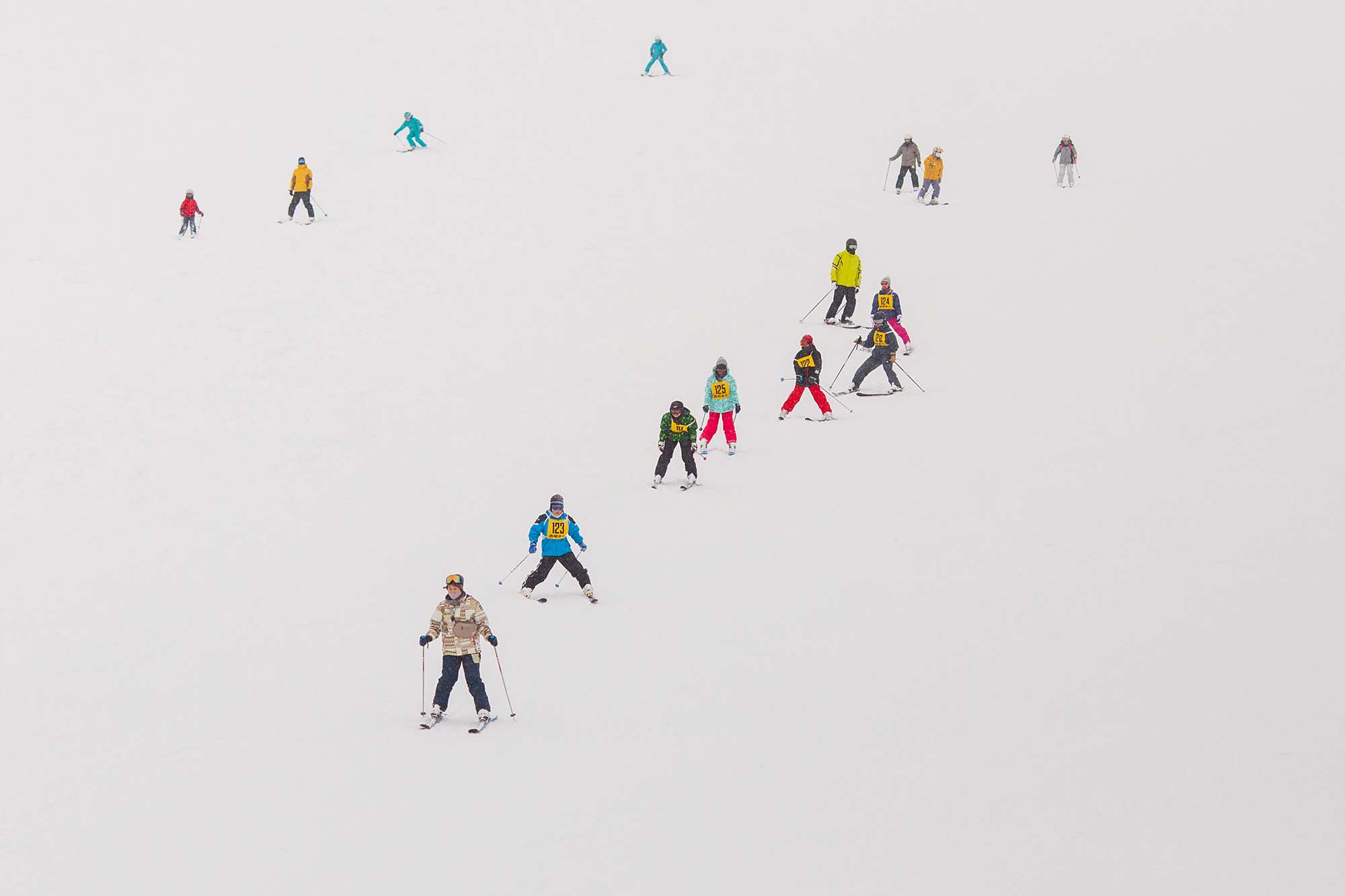
The resort also pleases non-skiers with the beautiful forest scenery and endless views of Lake Tazawako on a clear day.
There are many amenities like Shirakaba Restaurant (open daily from 9:00 am until 30 minutes after the closing of the lifts) with tasty lunch menus. They serve udon, curry, soba, and ramen set menus for a quick energy bump before getting back to the slopes.
For those looking for a lounge atmosphere, Lounge Kuromori next to Shirakaba is another great alternative offering pub-style food and drinks (open daily except on Wednesdays).
Access to Semboku City
Semboku City is one of the few cities in Japan served by two Shinkansen stops. Akita Shinkansen Line departing from Tokyo stops at Kakunodate (3h 10 min.) and Tazawako (2h 51 min.). There is also an extensive bus network commuting between major sites in the area including Kakunodate, Tazawako, and Nyuto Onsenkyo.
In Semboku, I found my dream winter land that I have long been looking for. It is the perfect place to enjoy all the joys of winter with the backdrop of picture-perfect scenery.
Article sponsored by the City of Semboku


